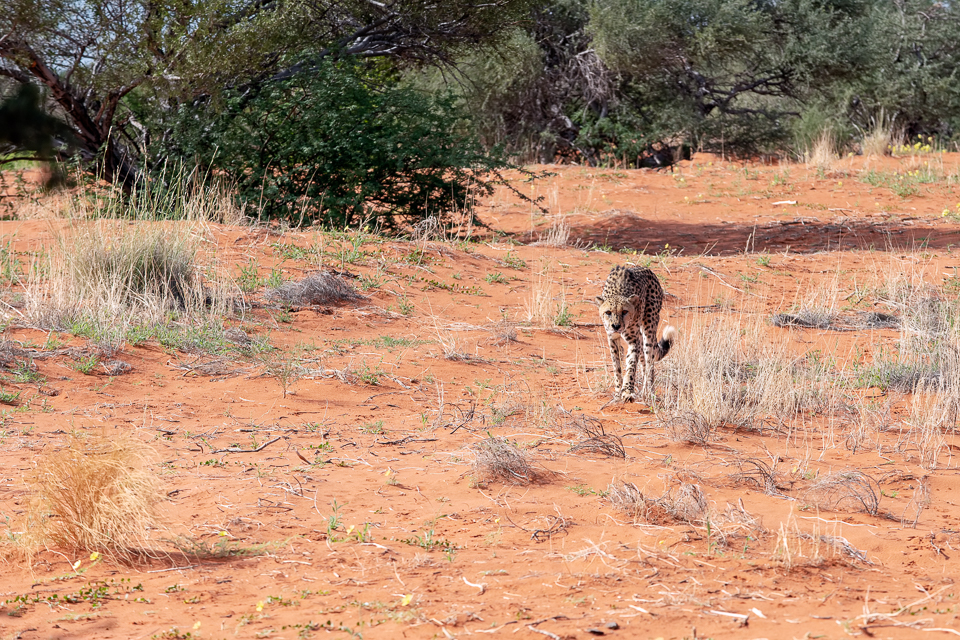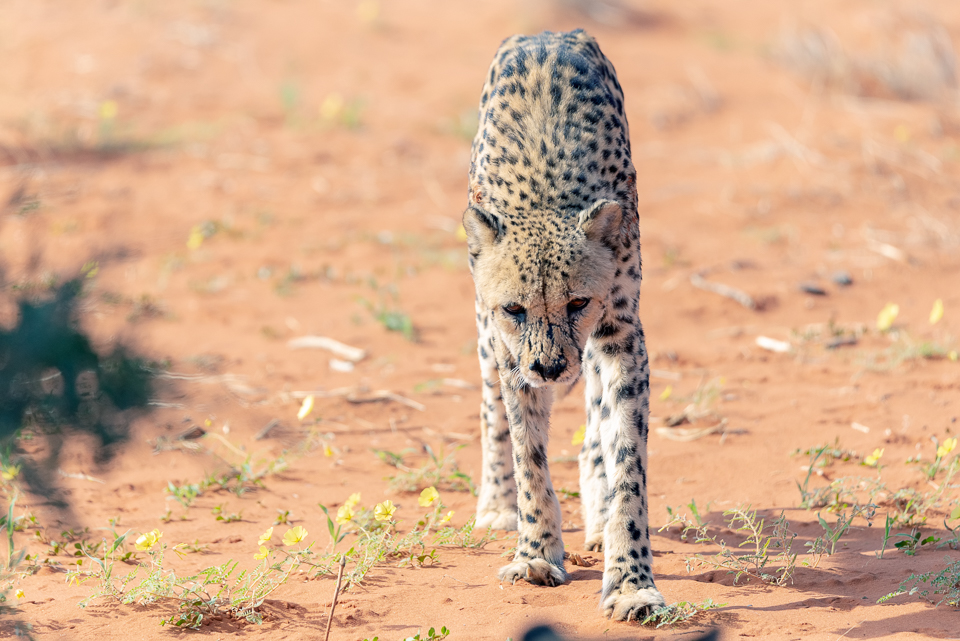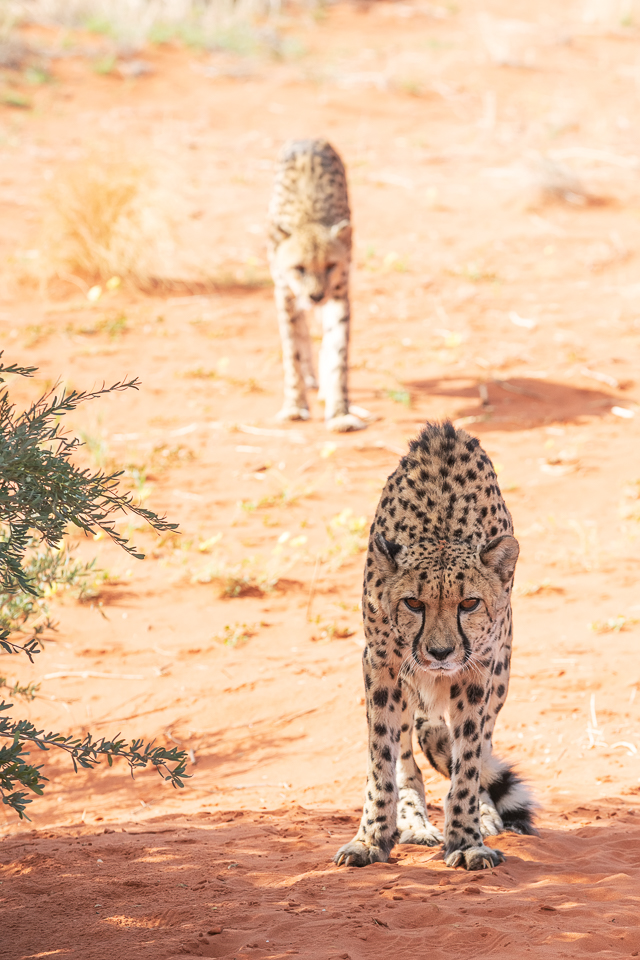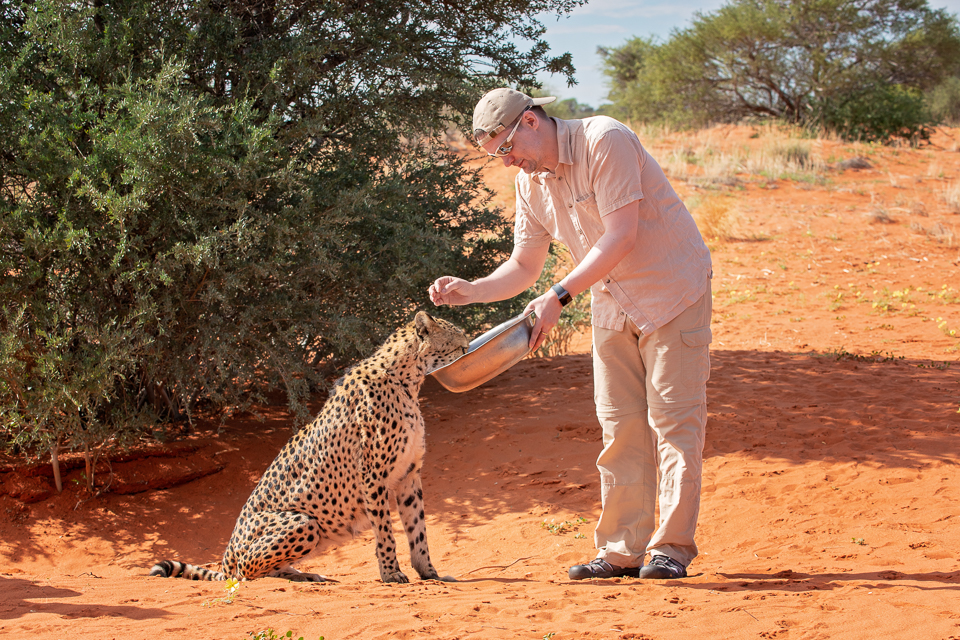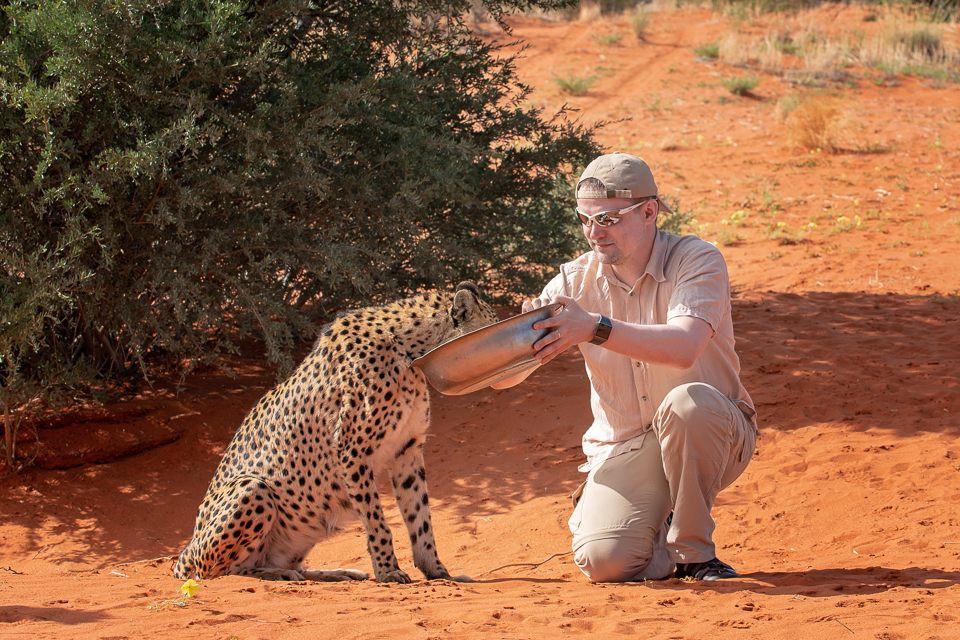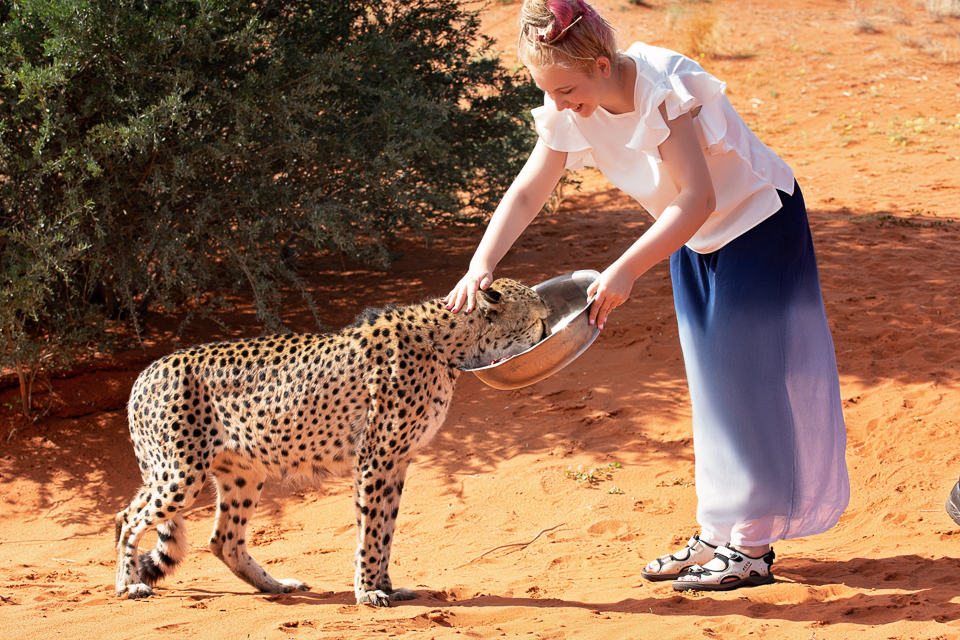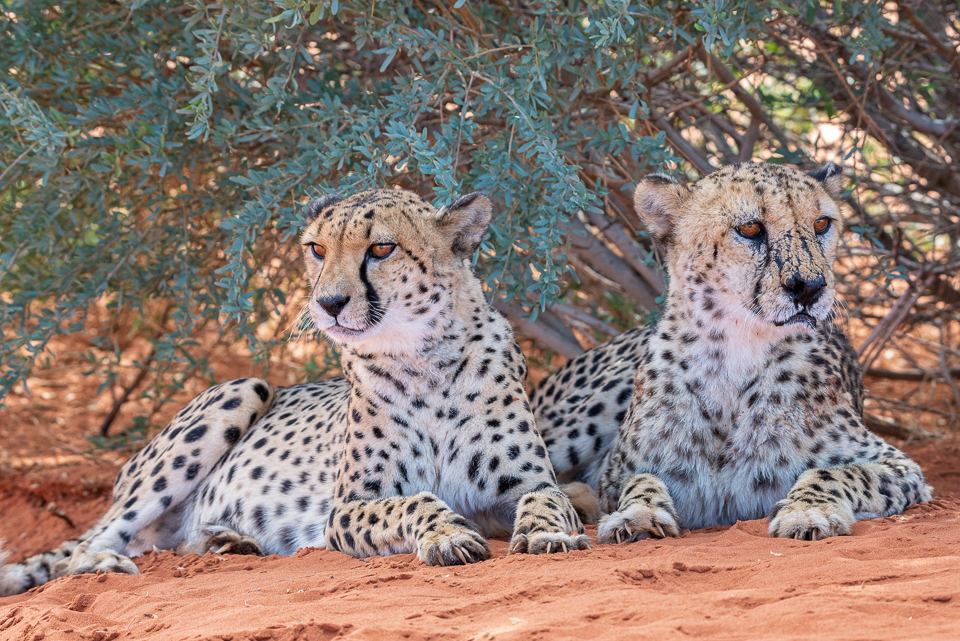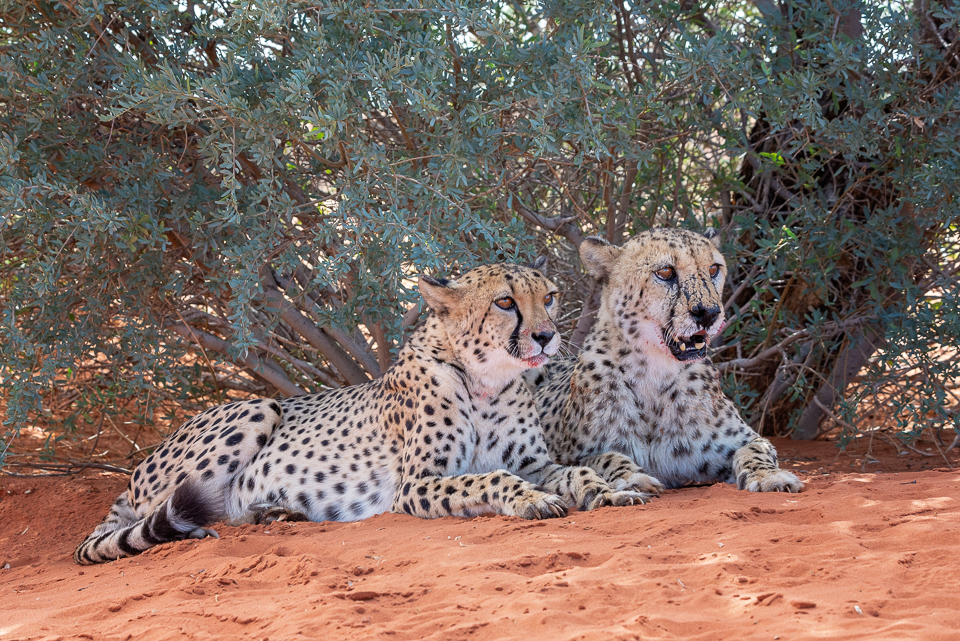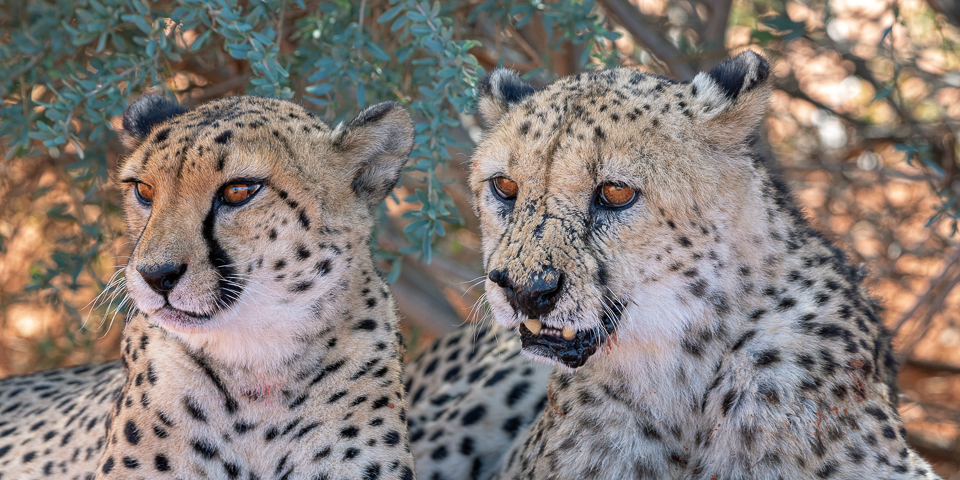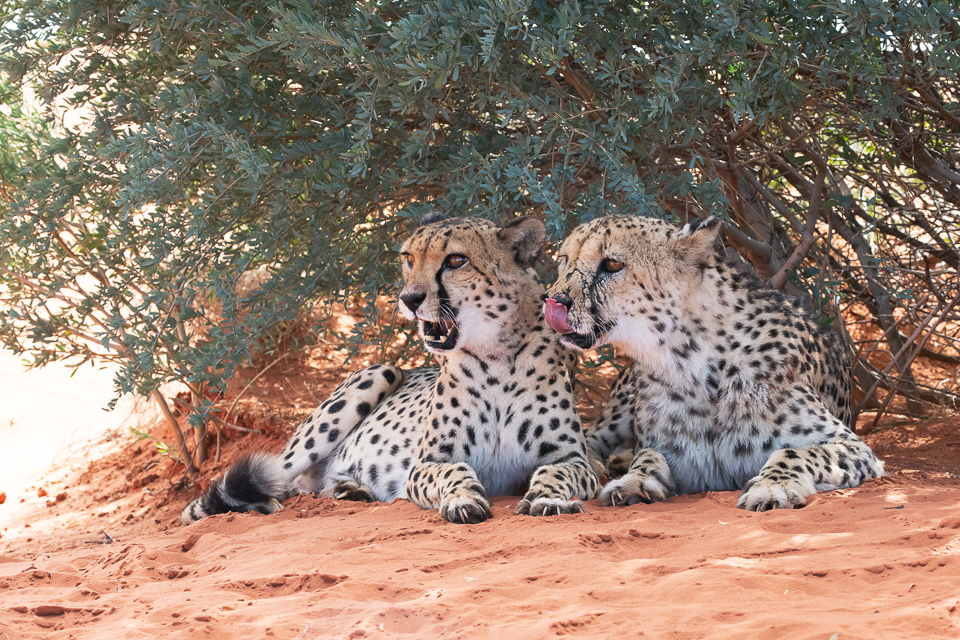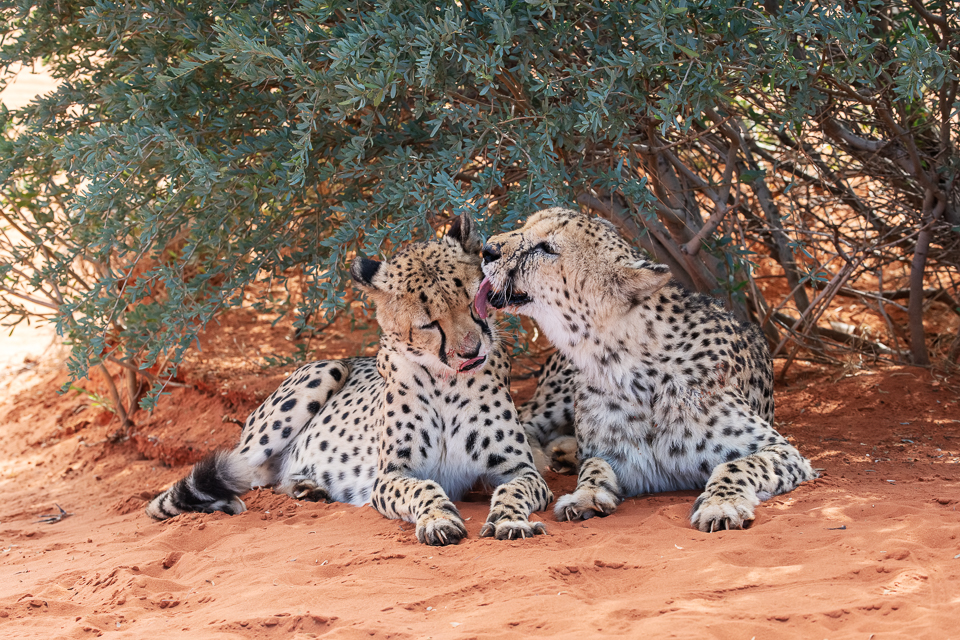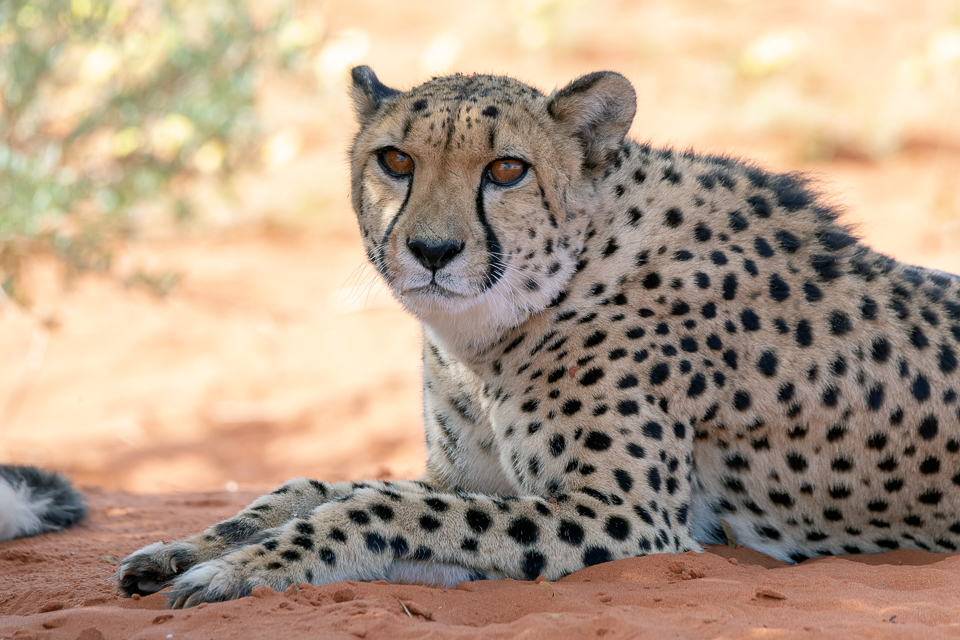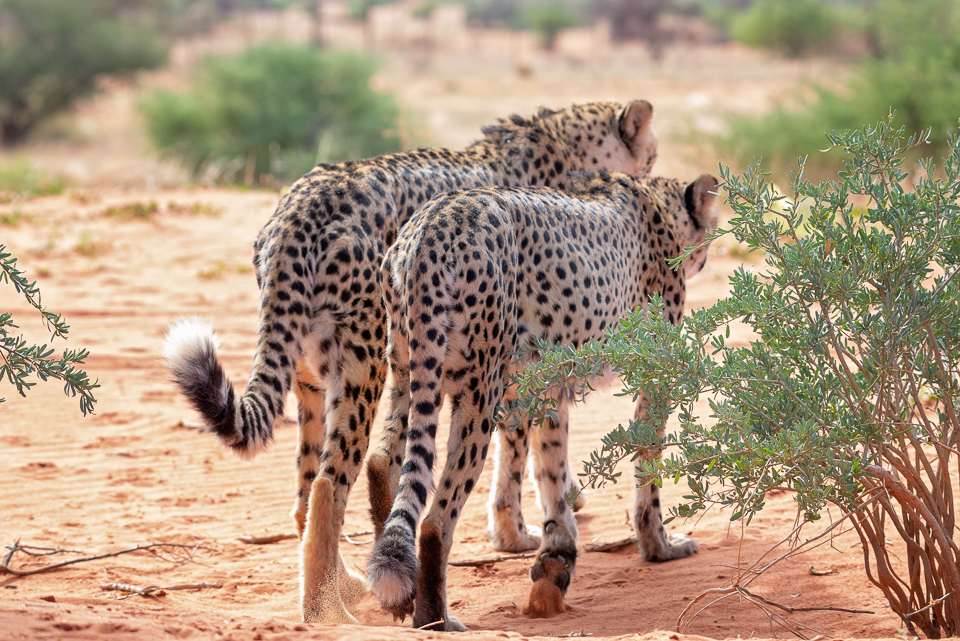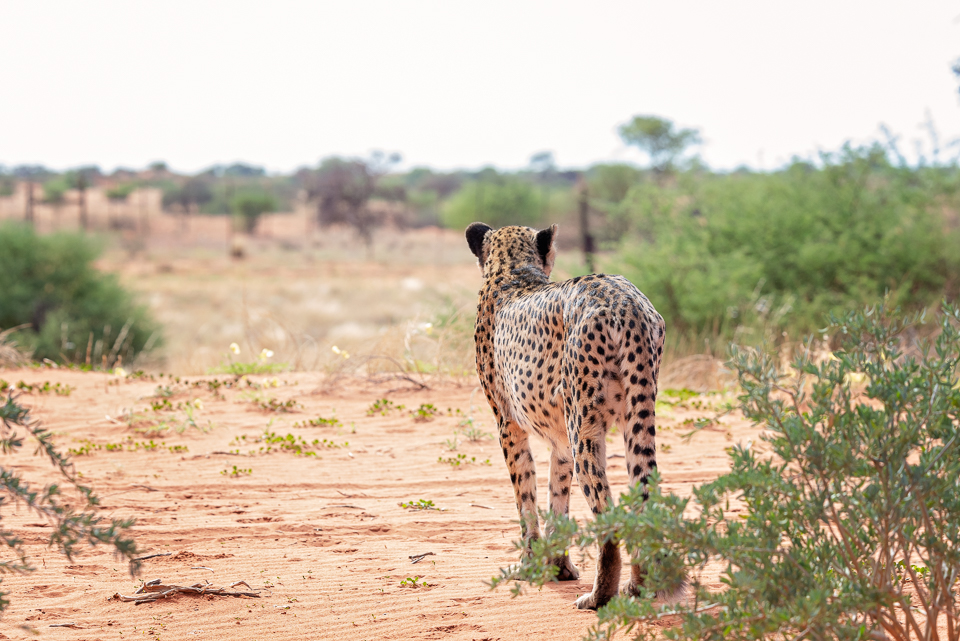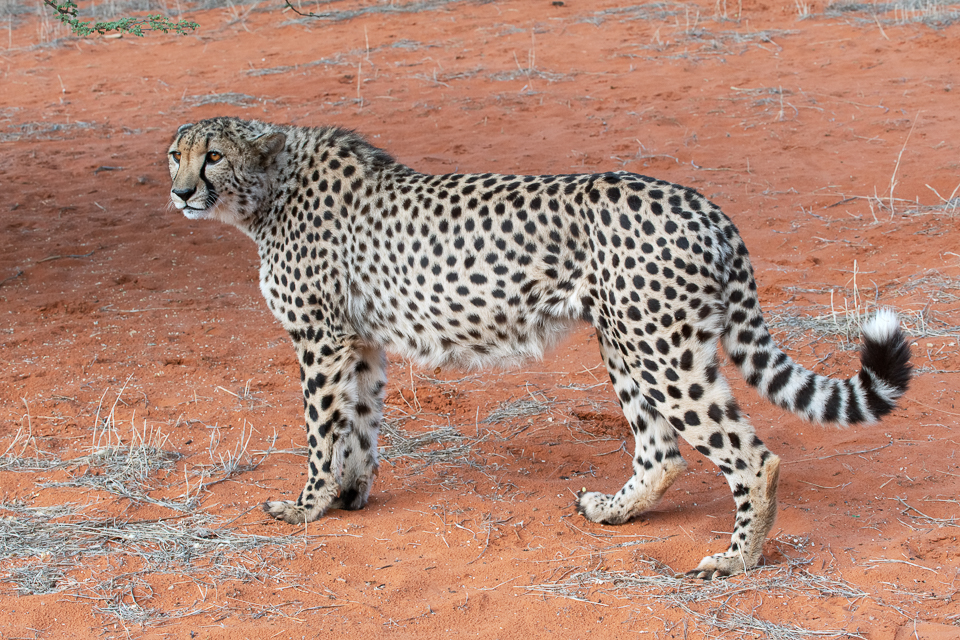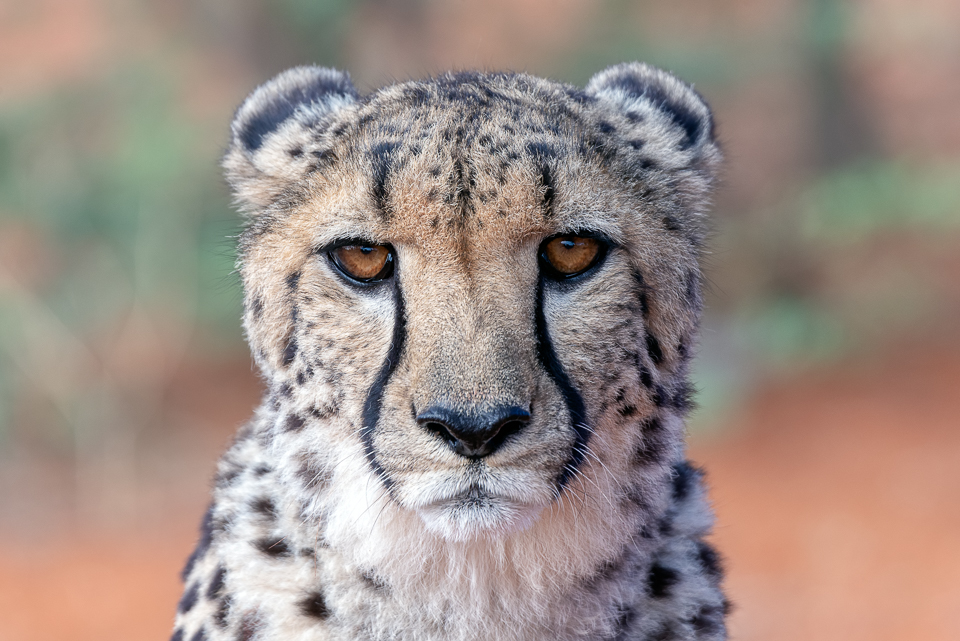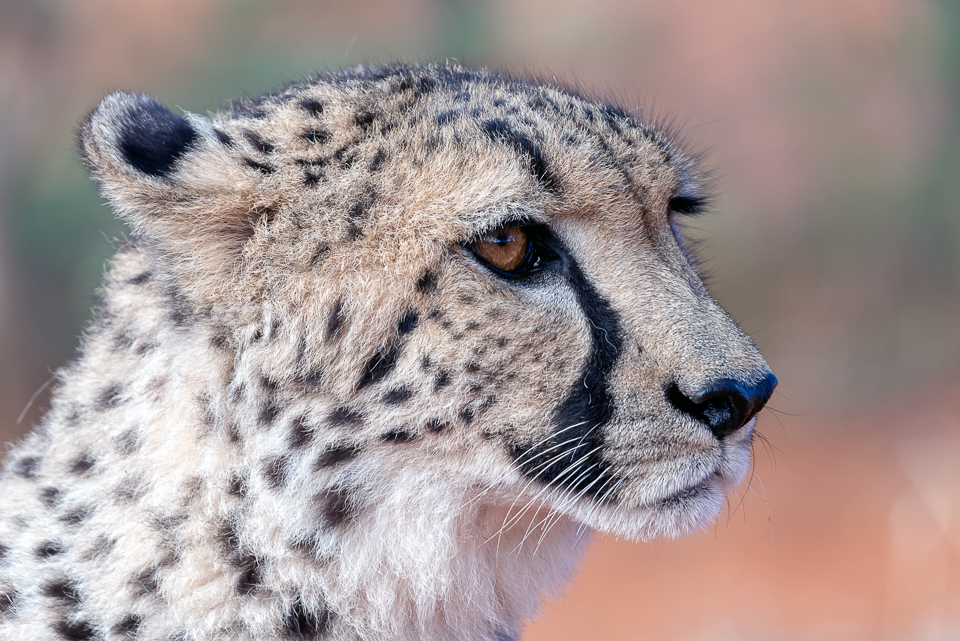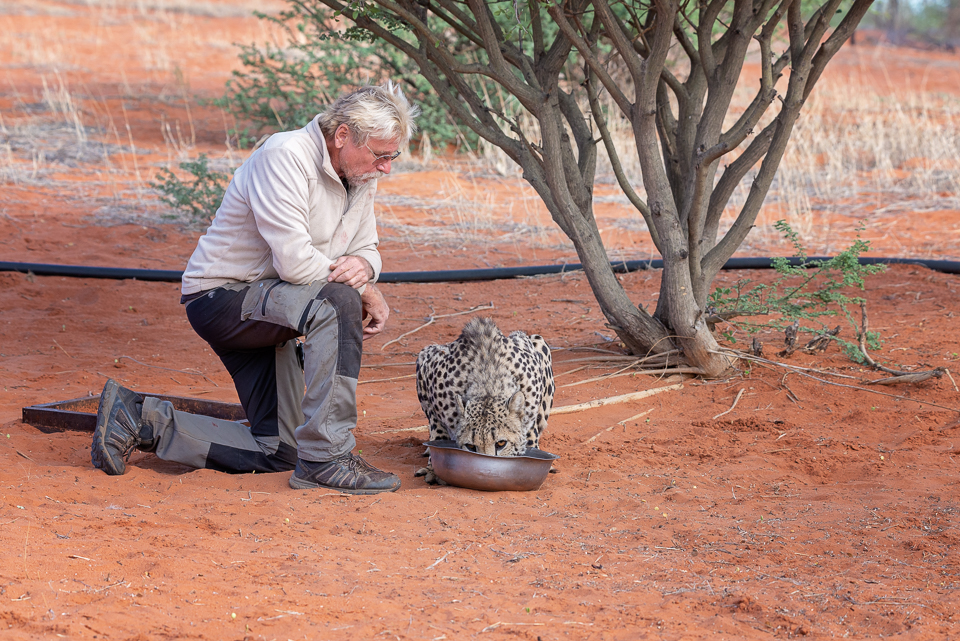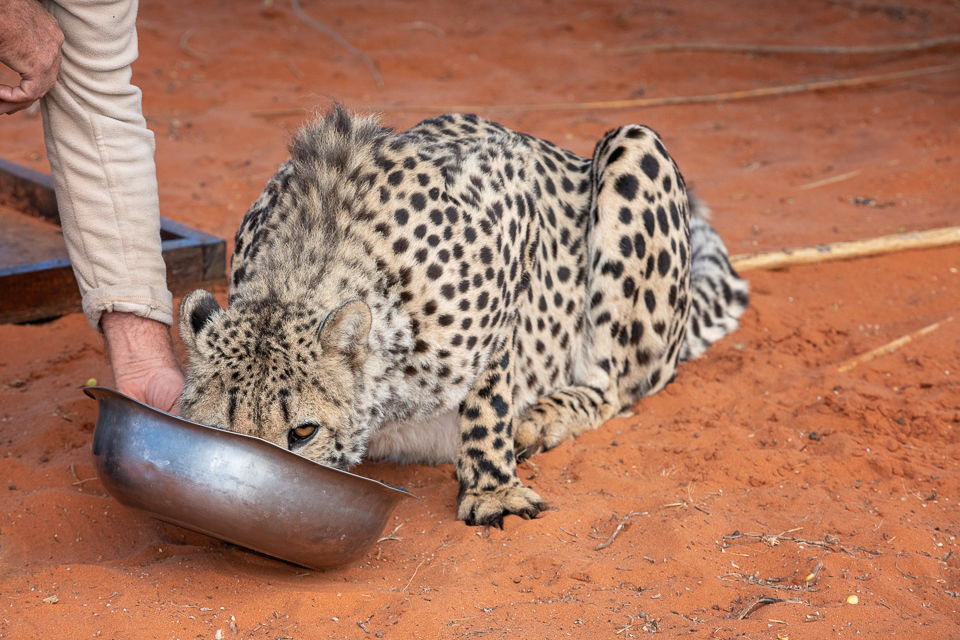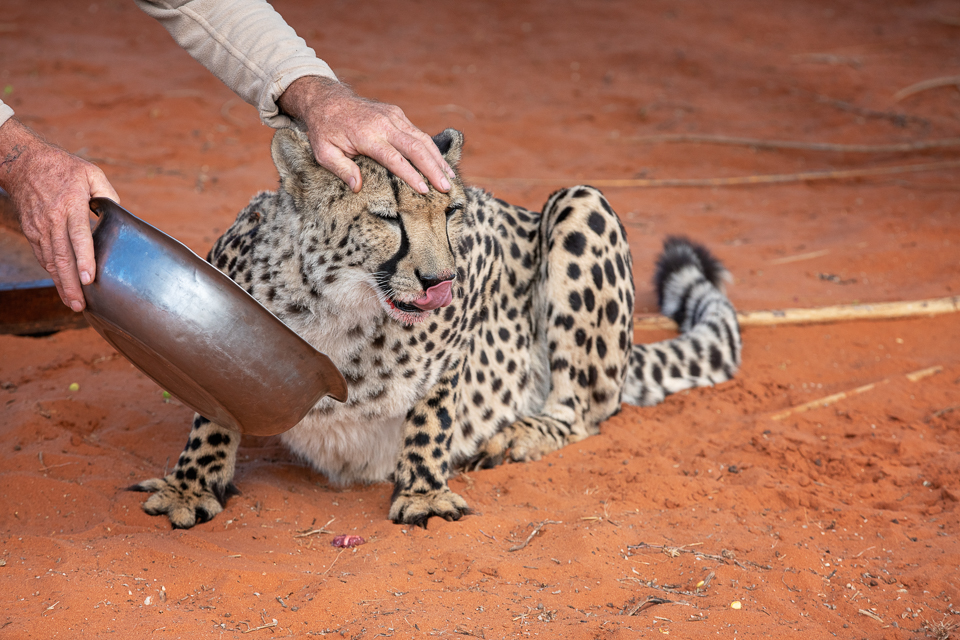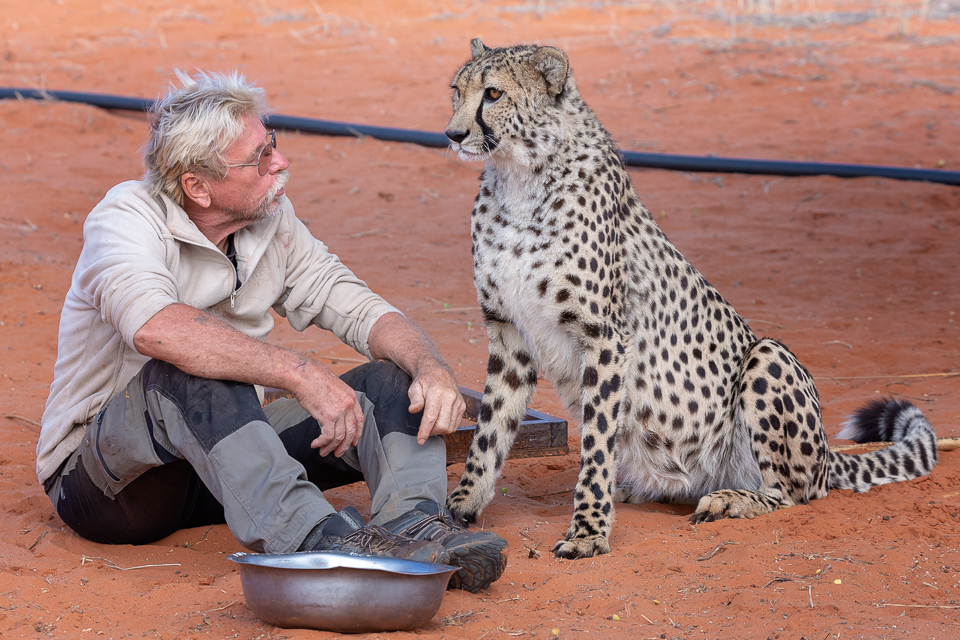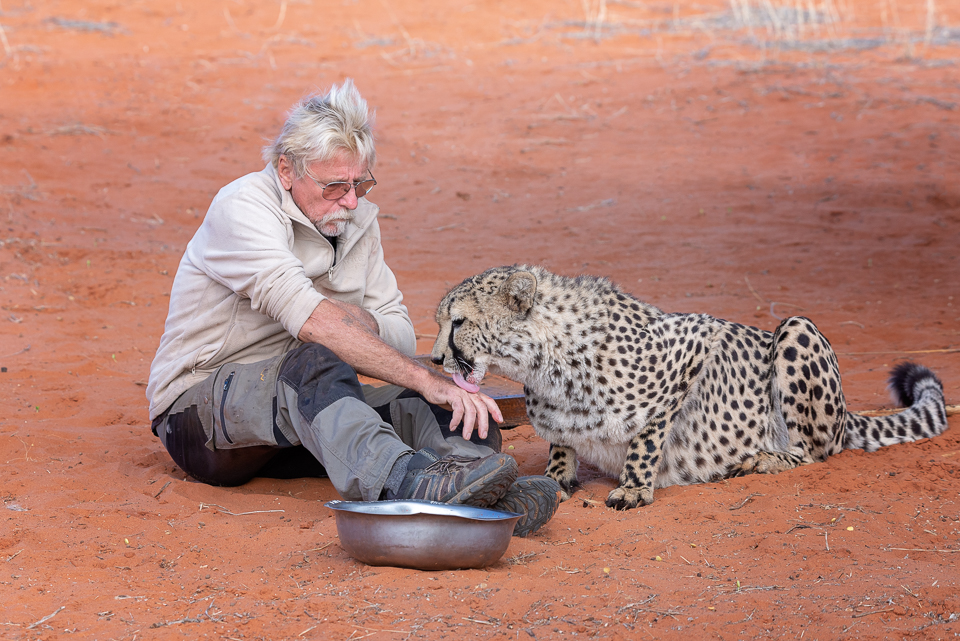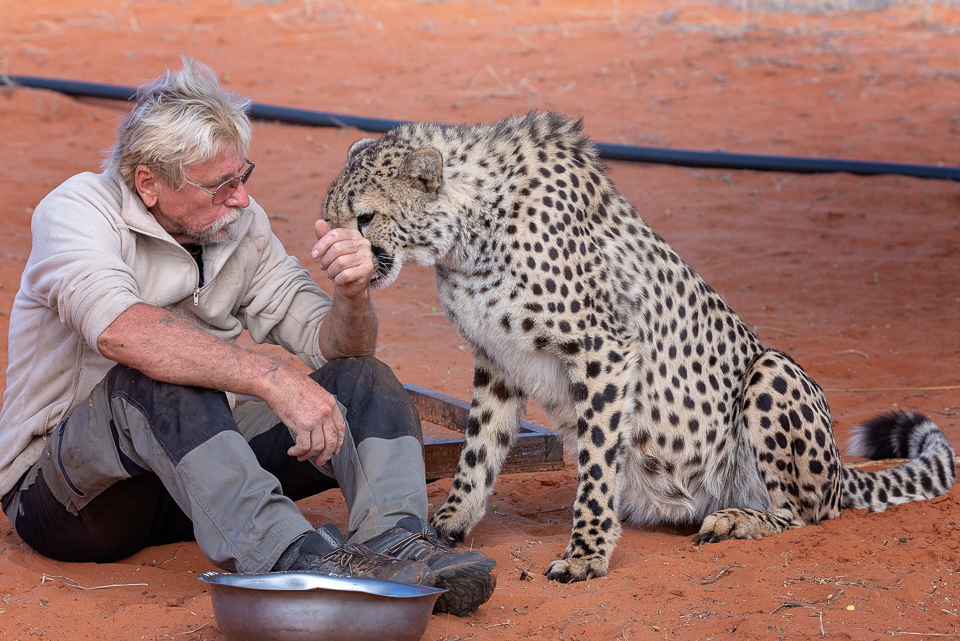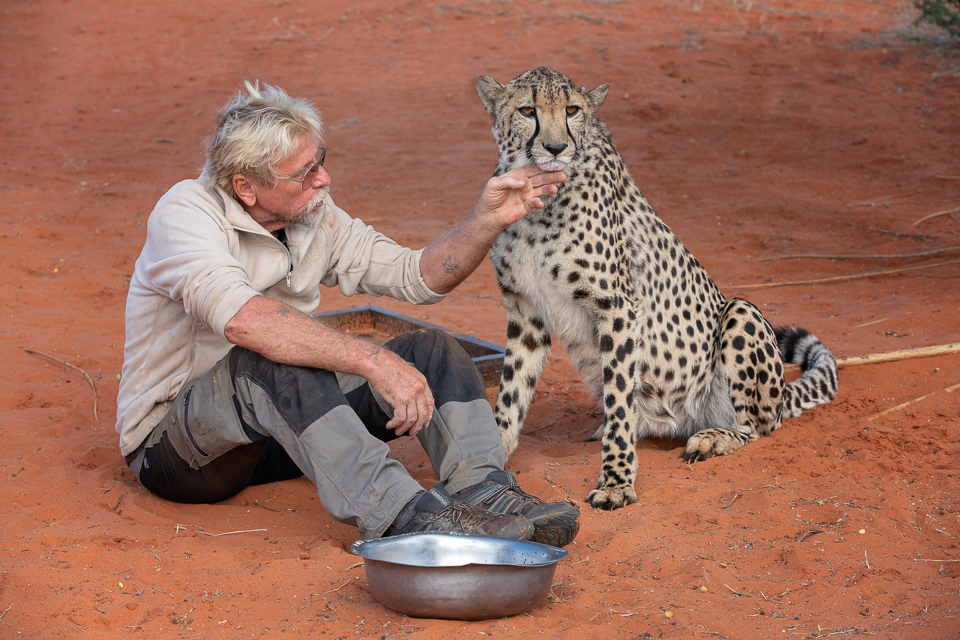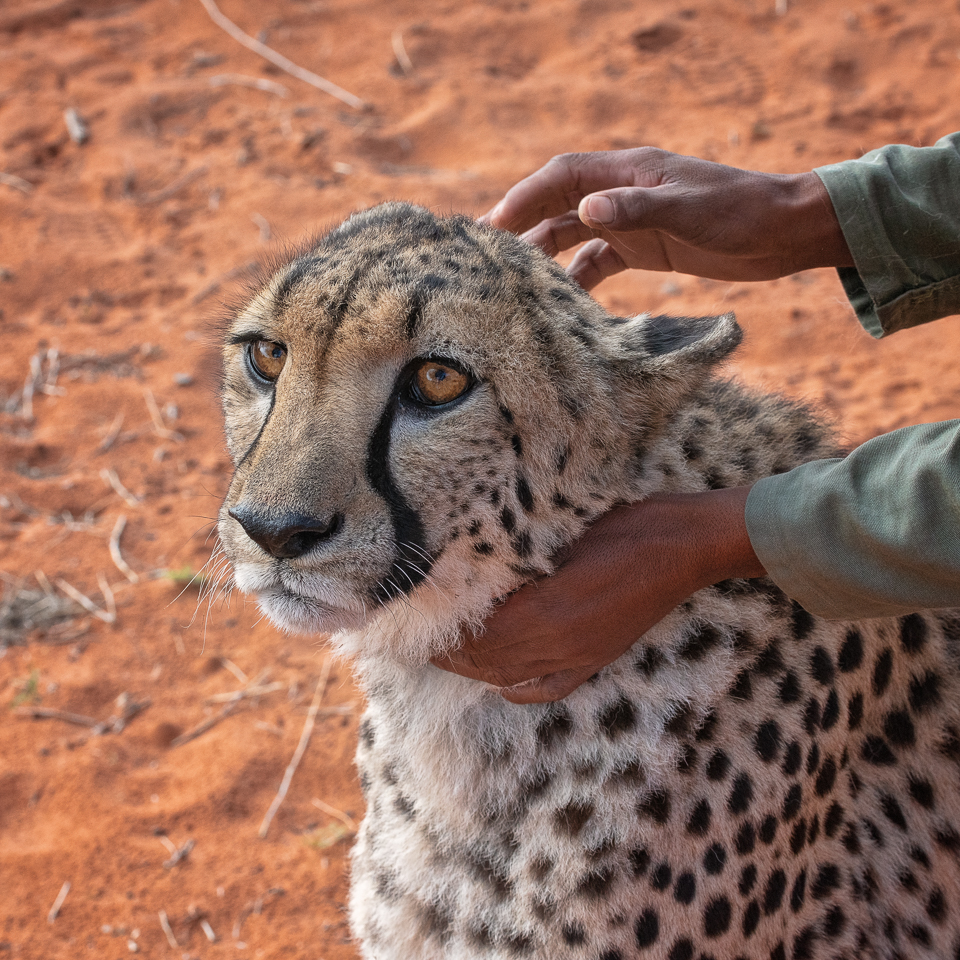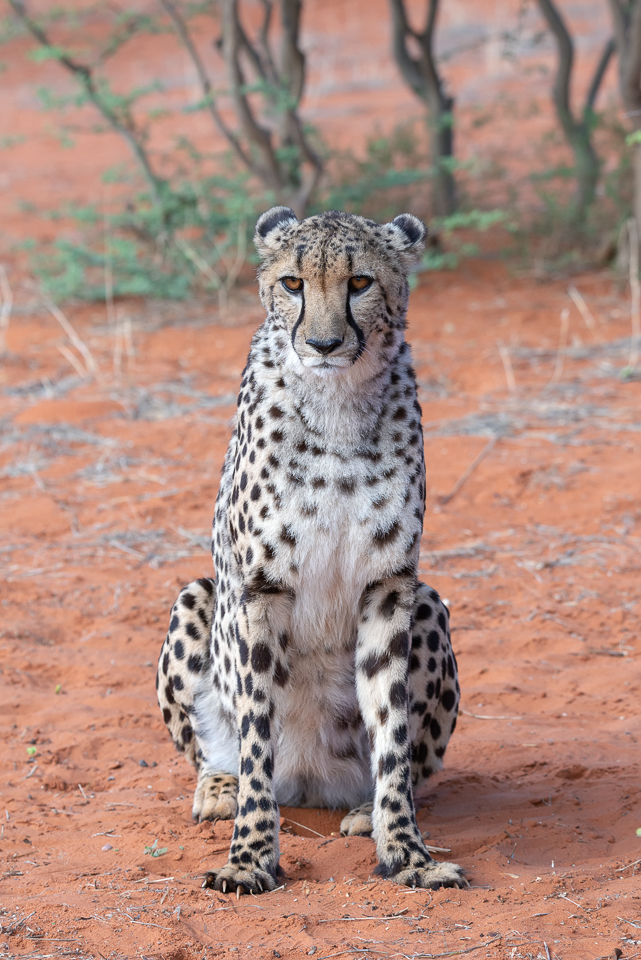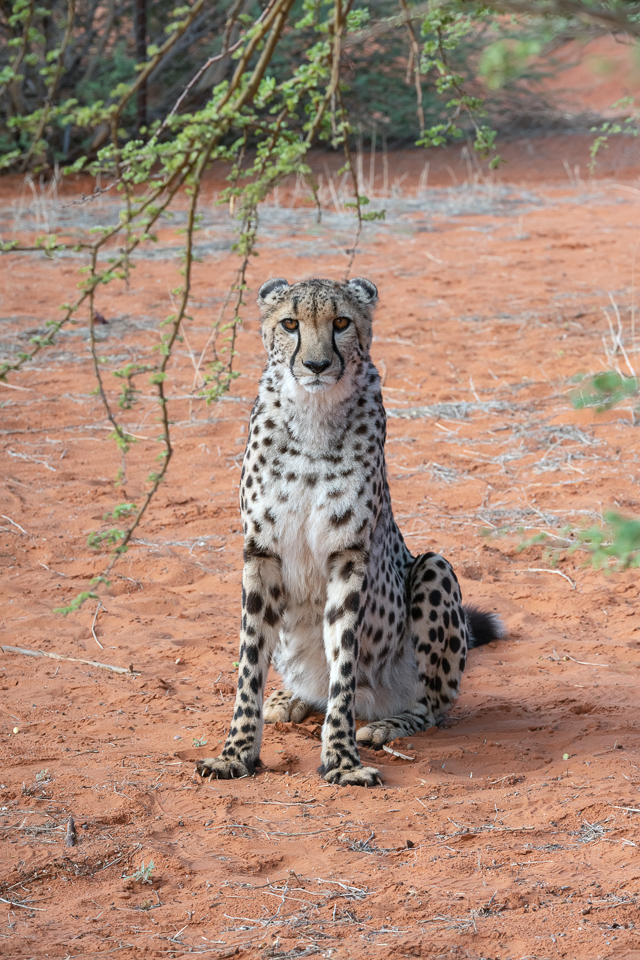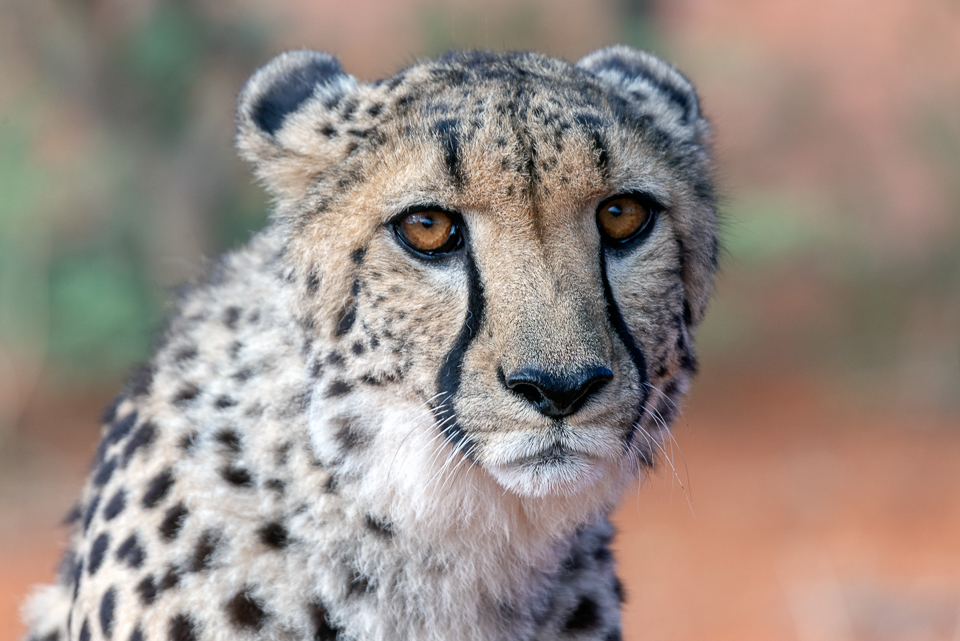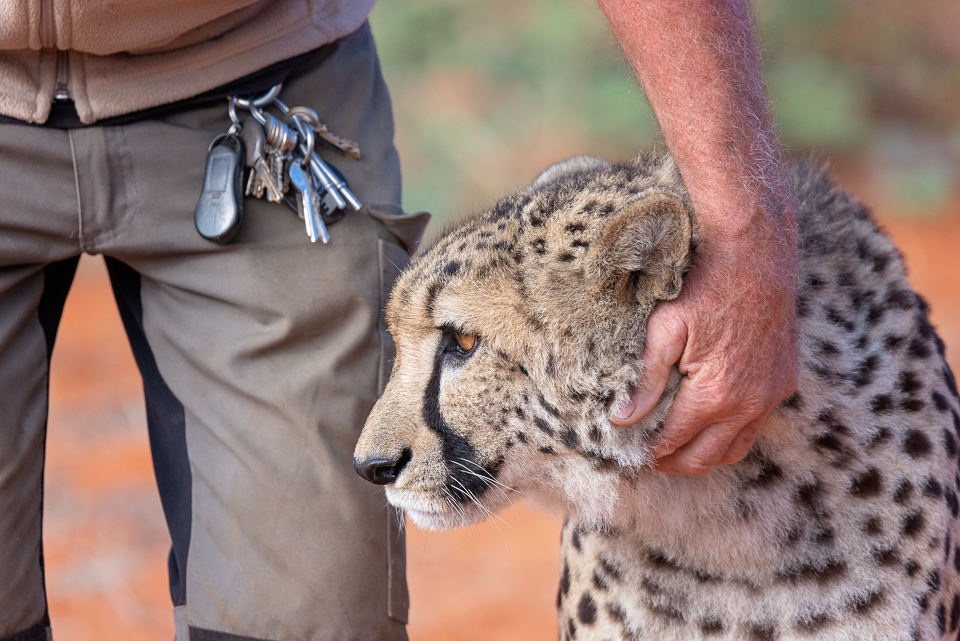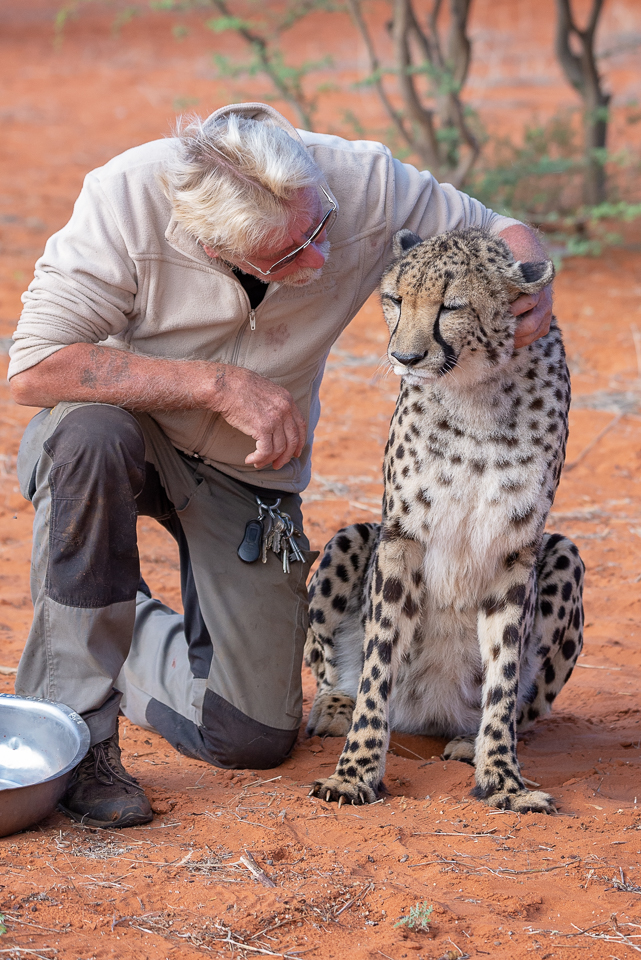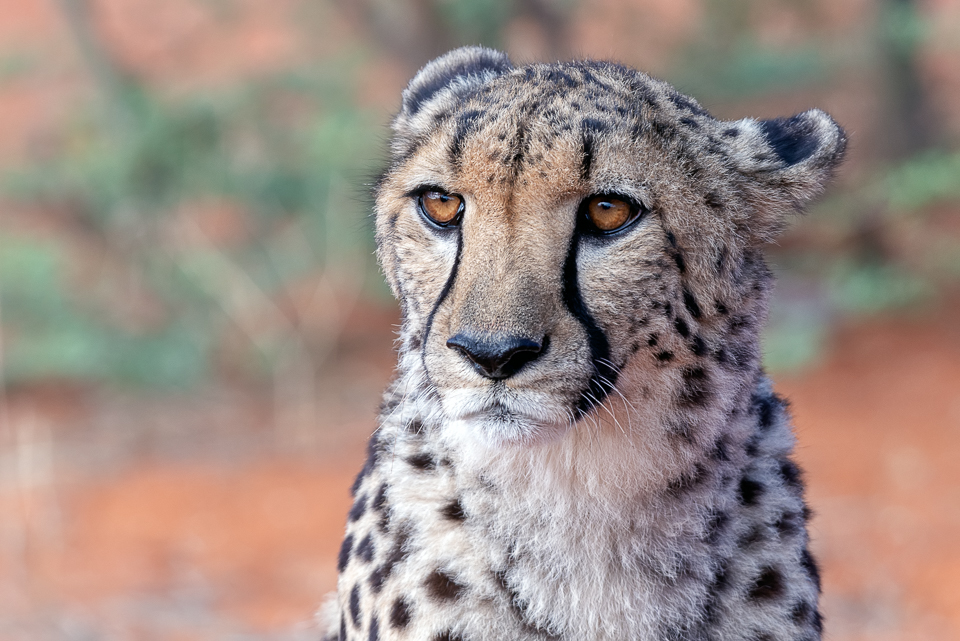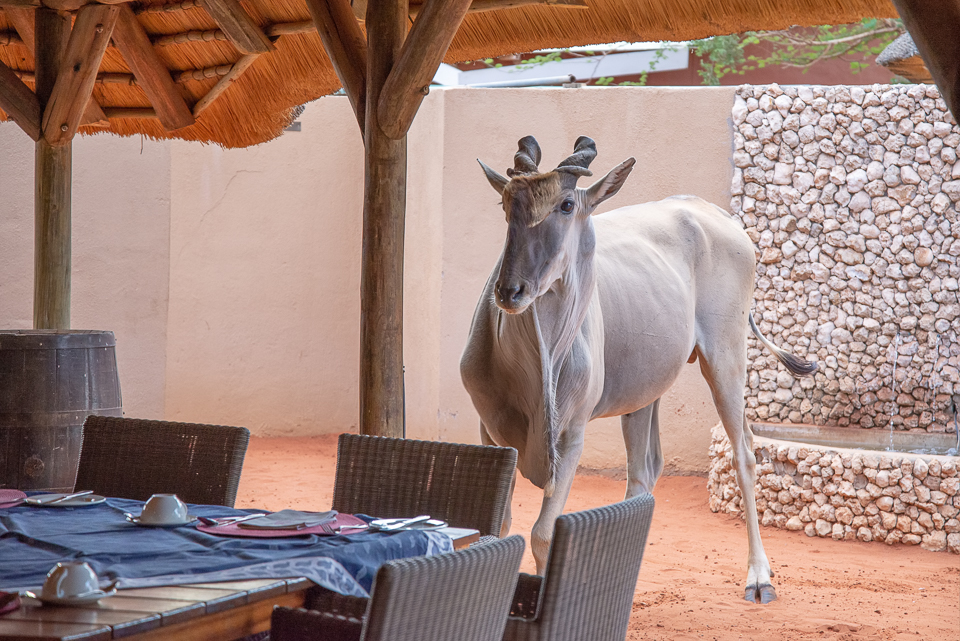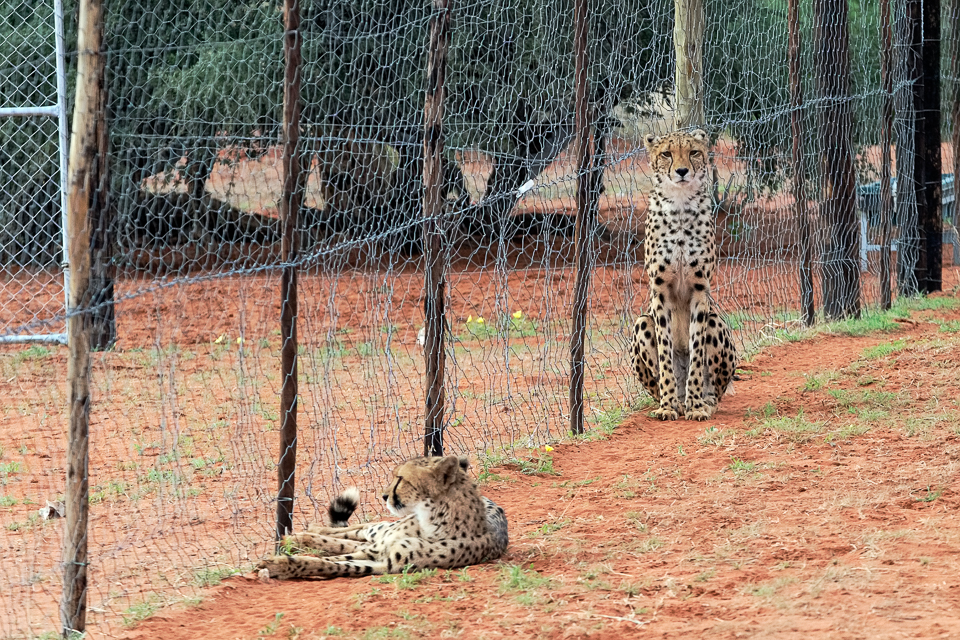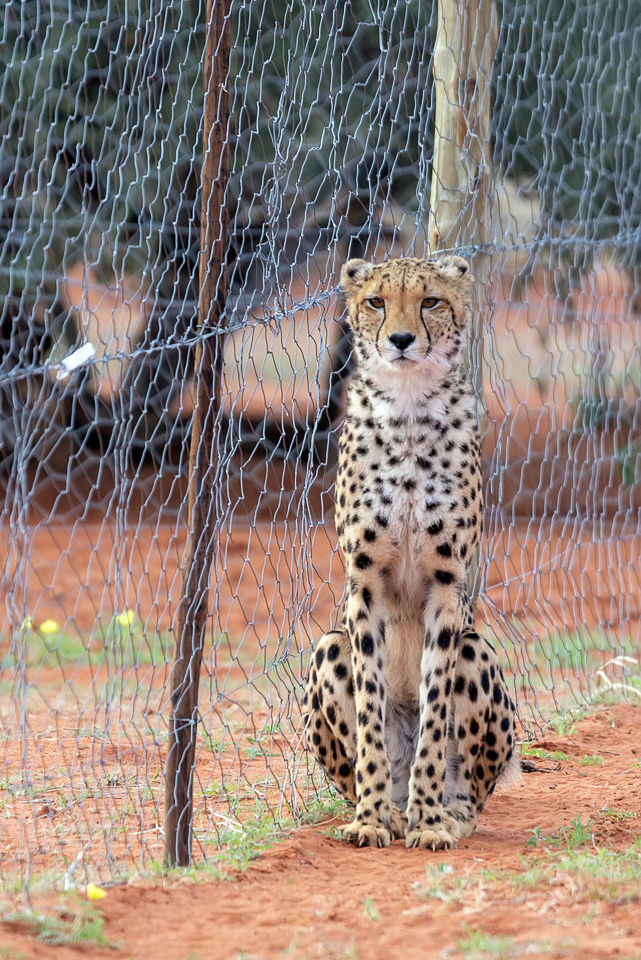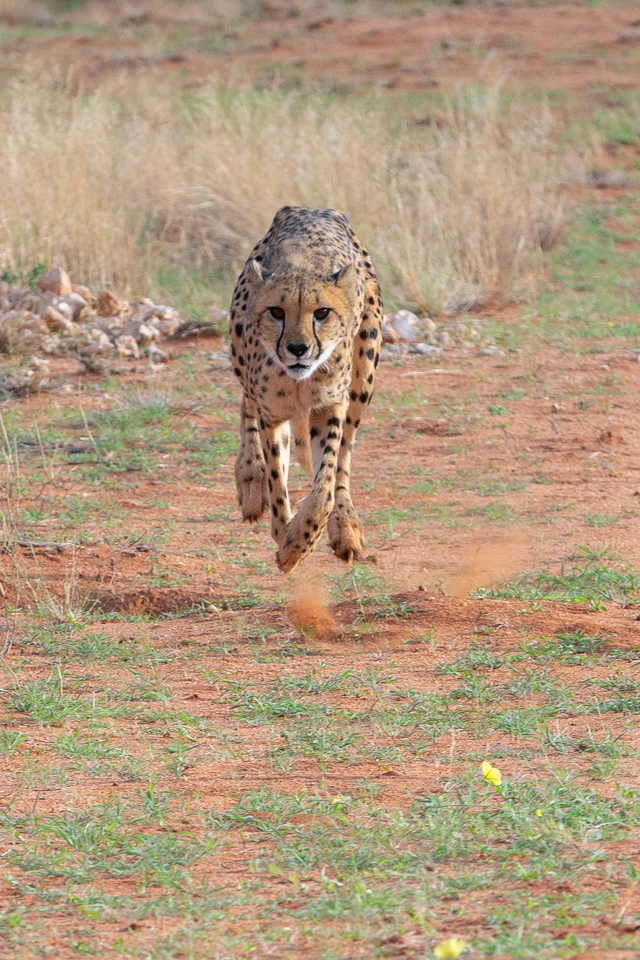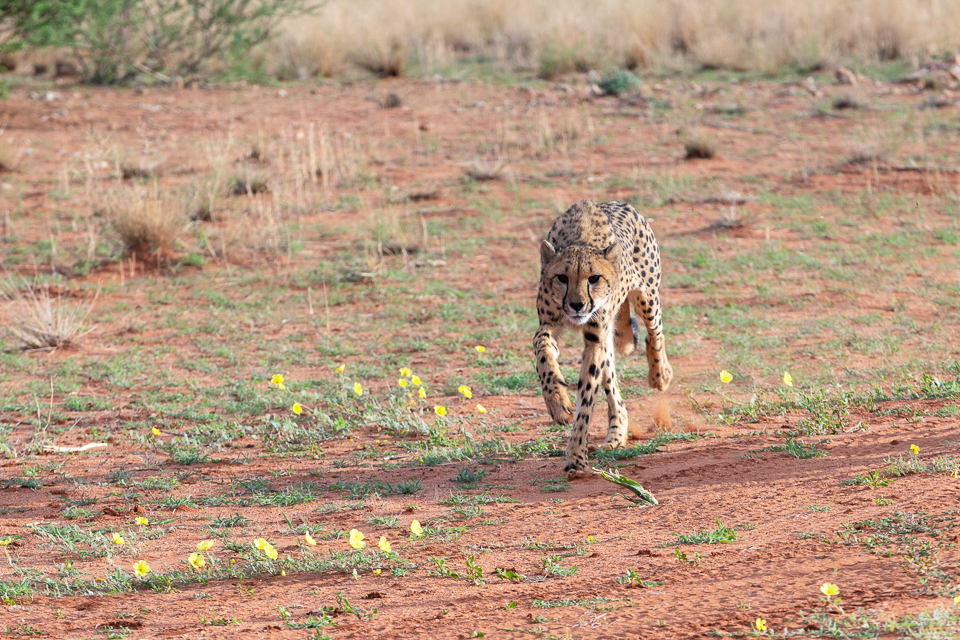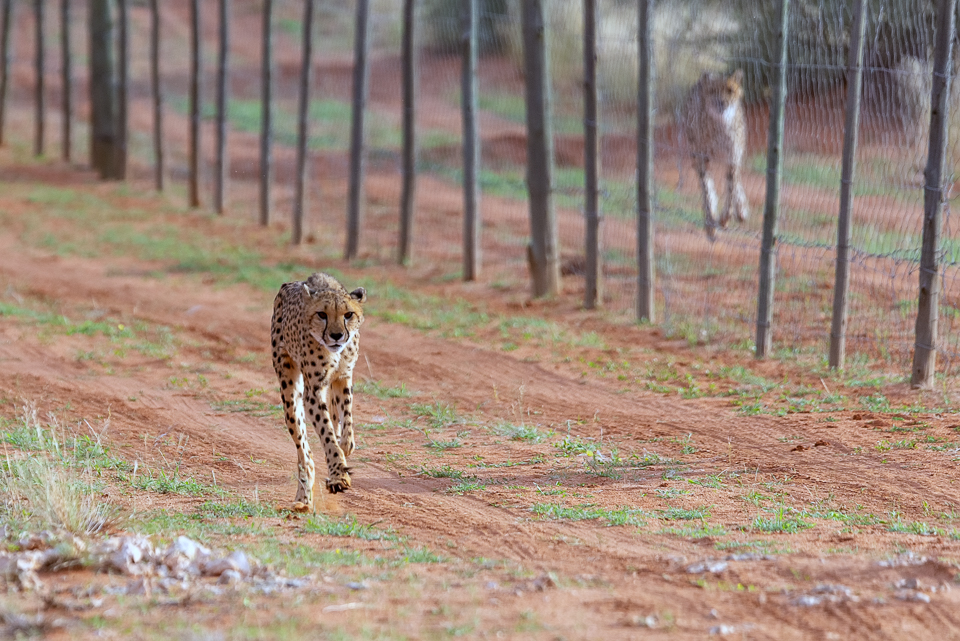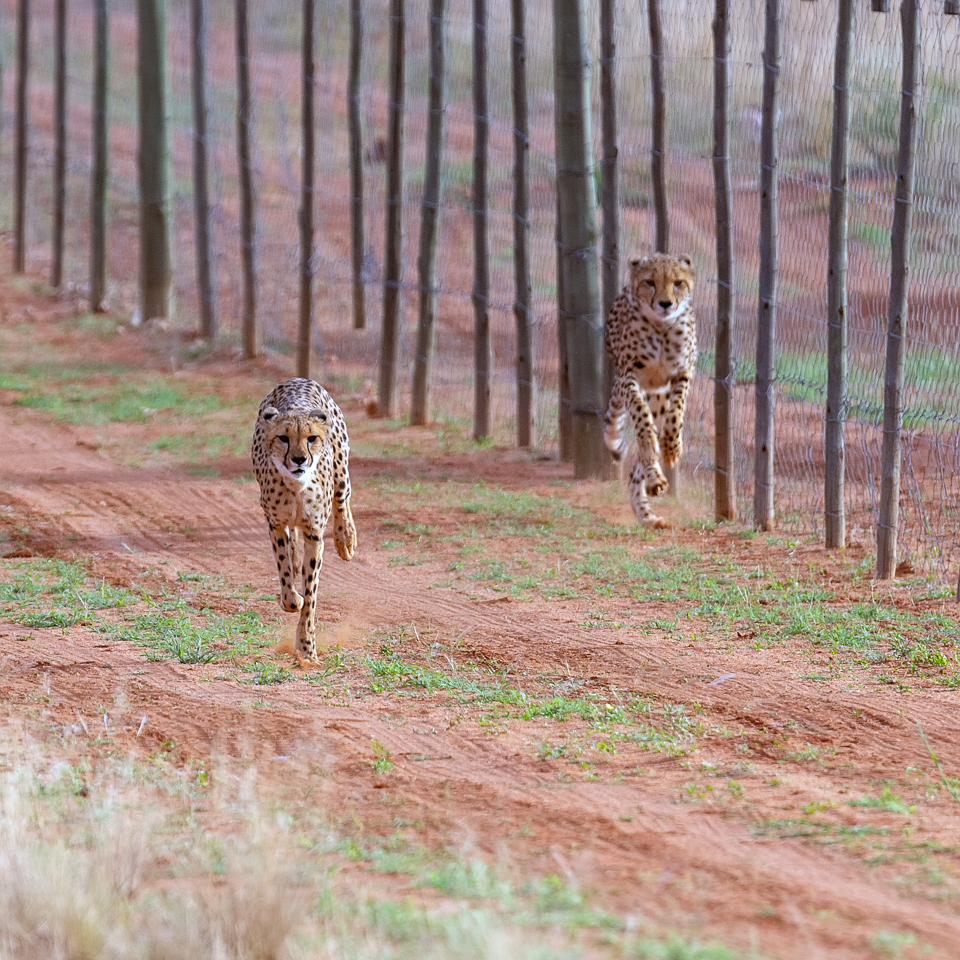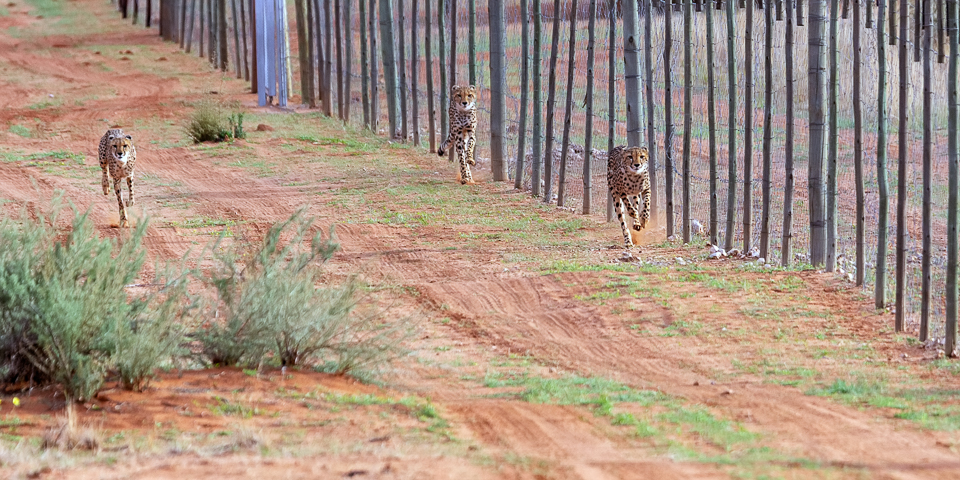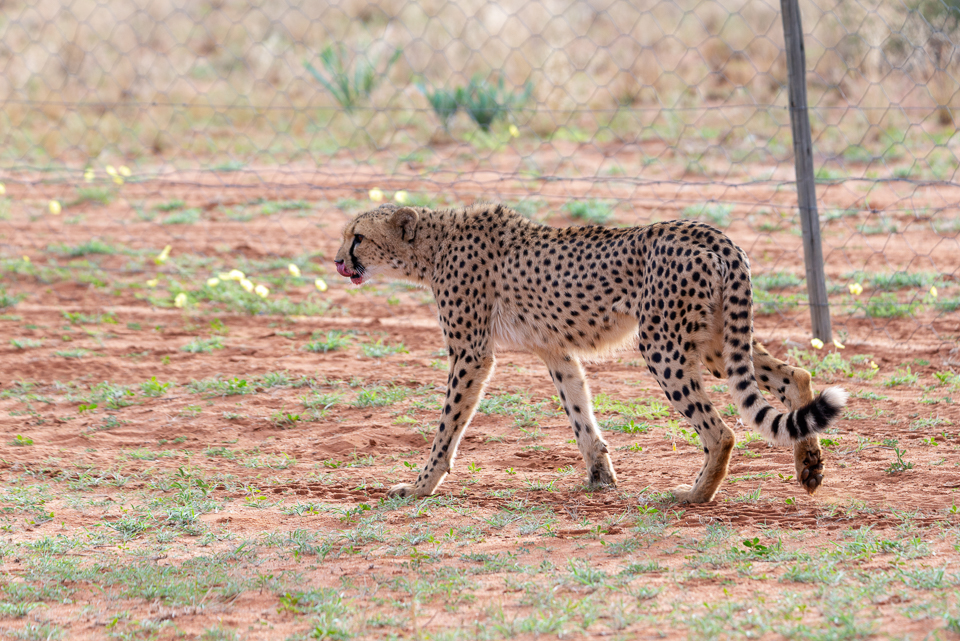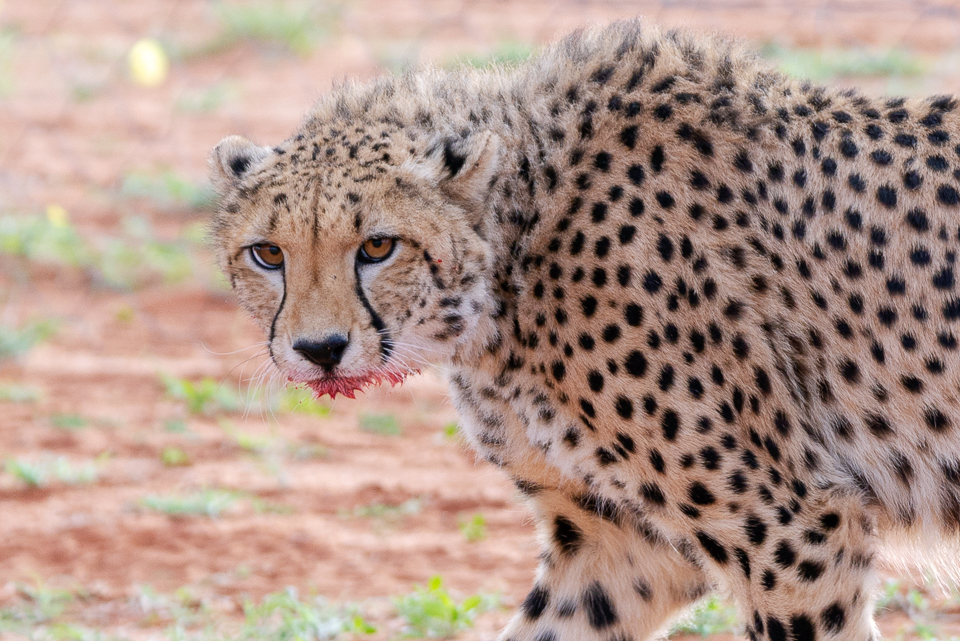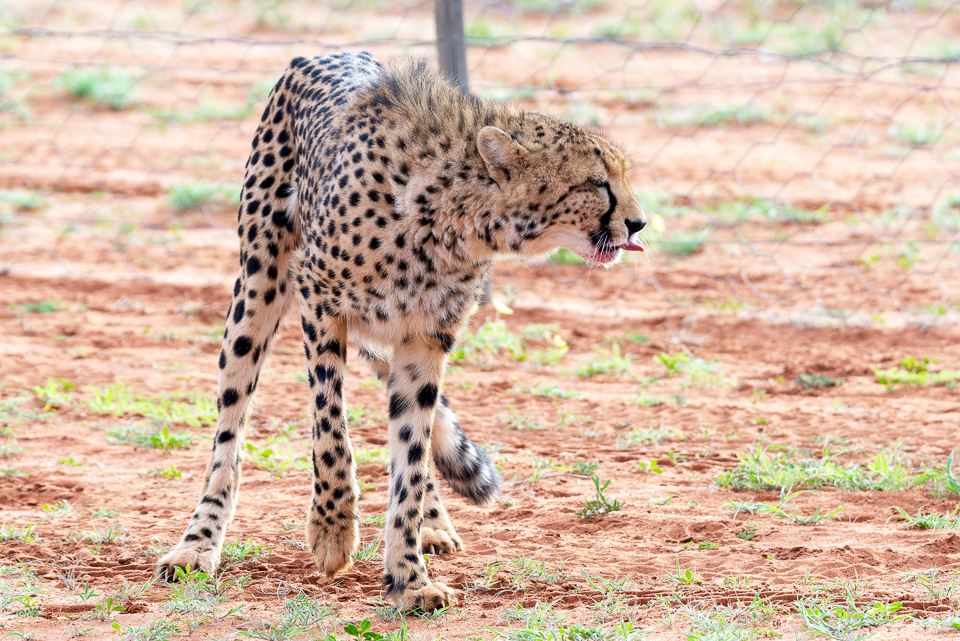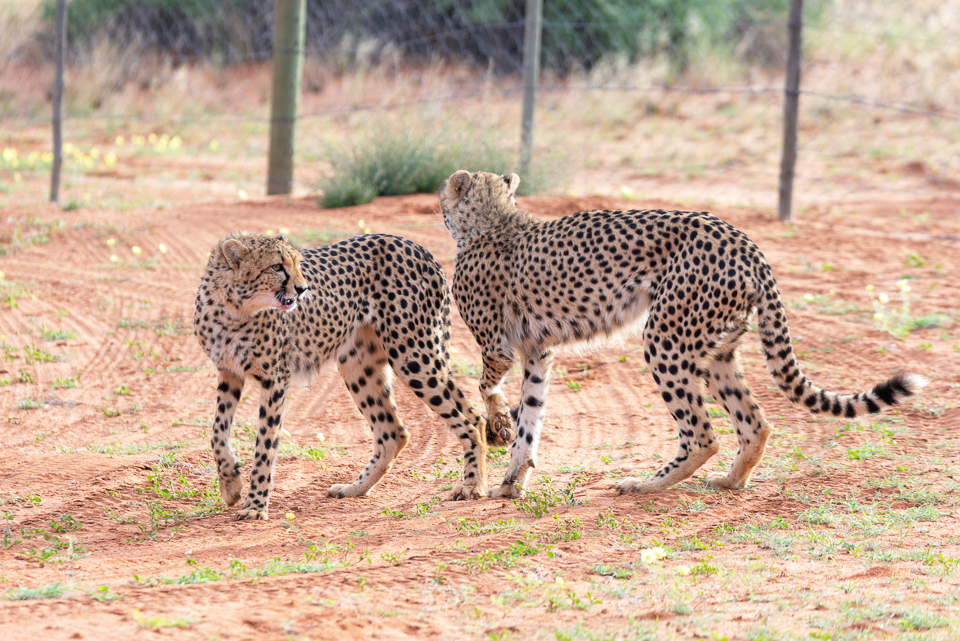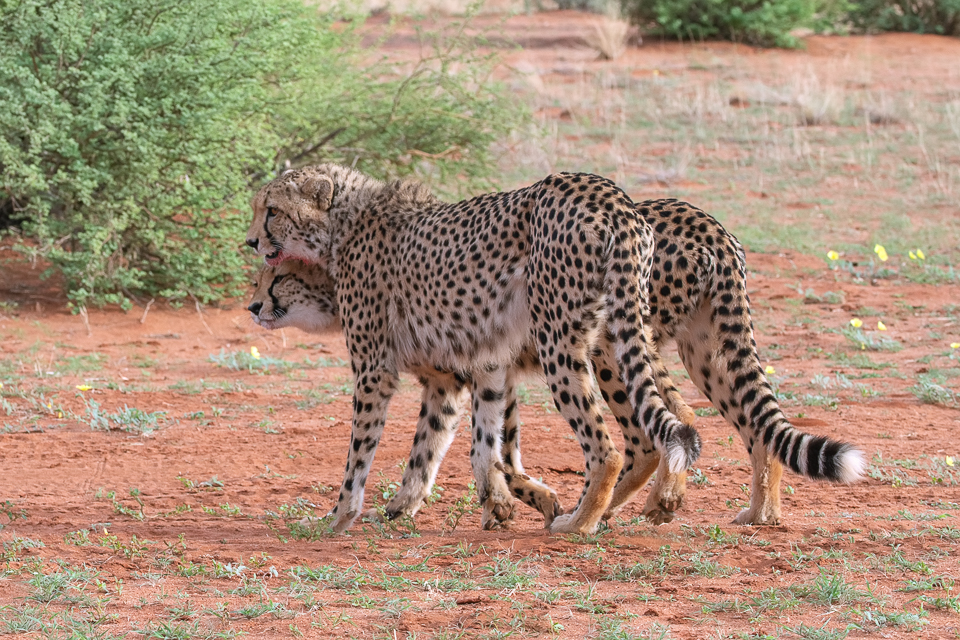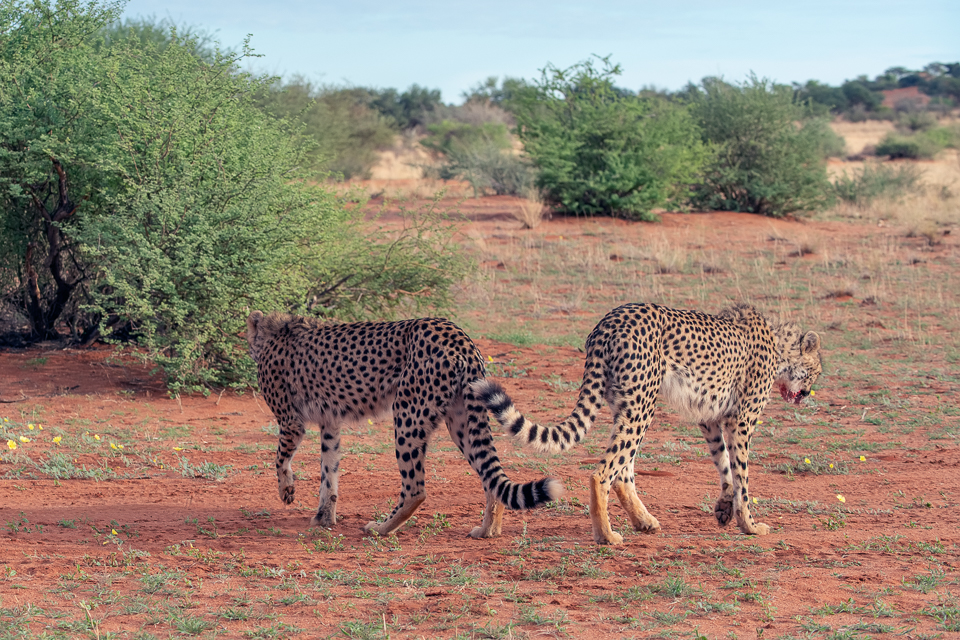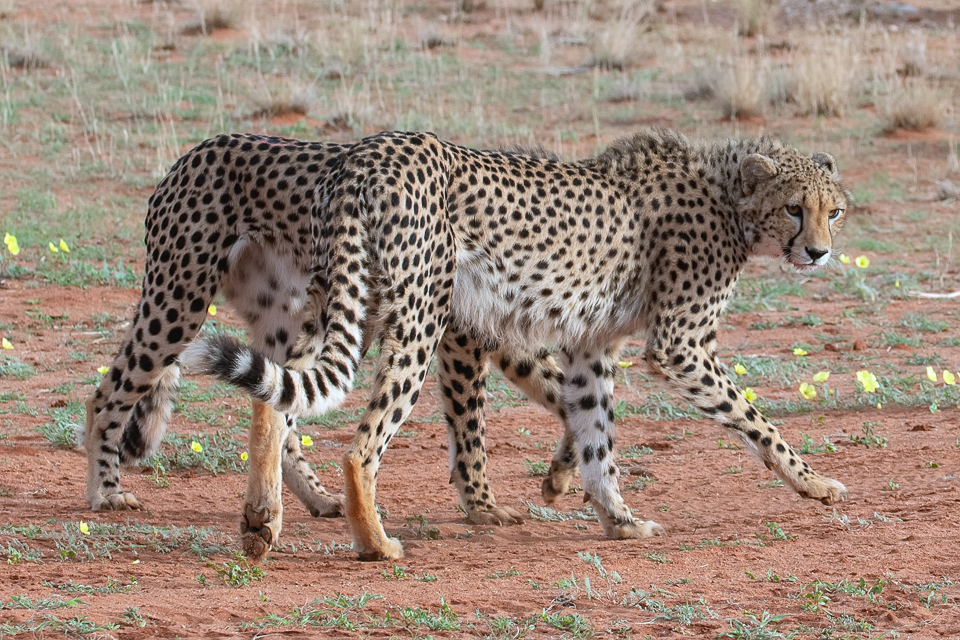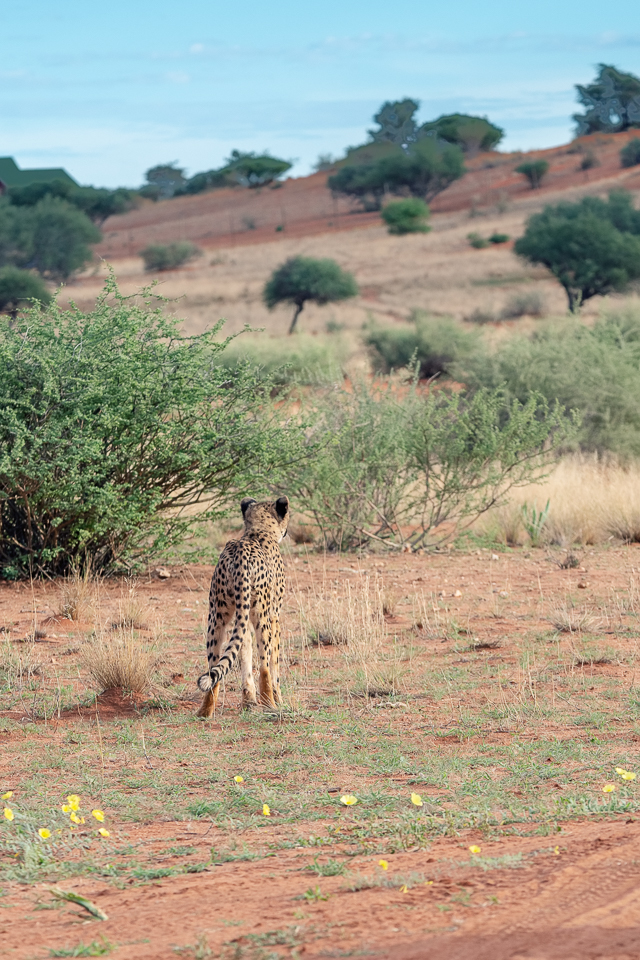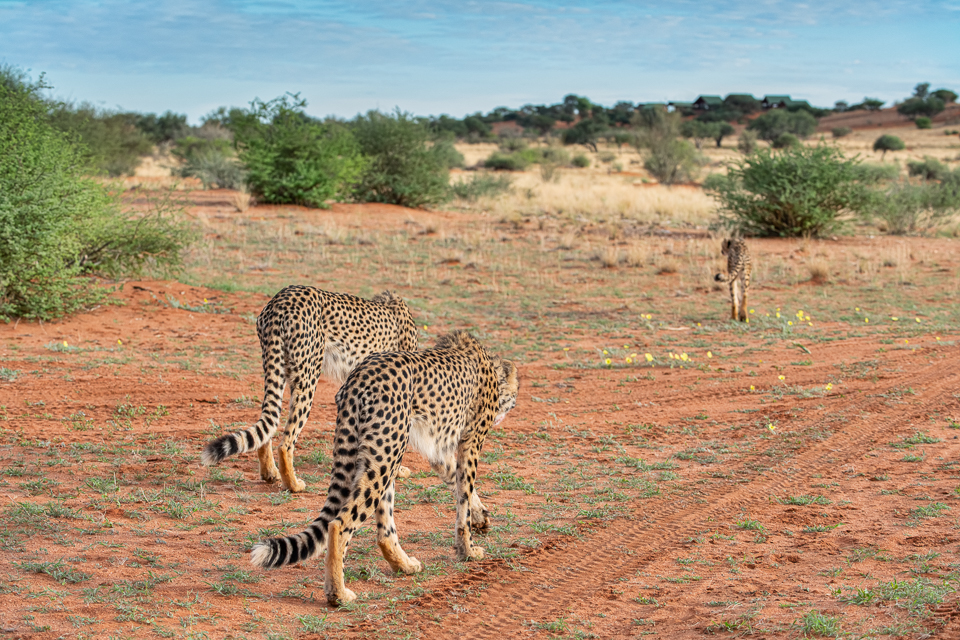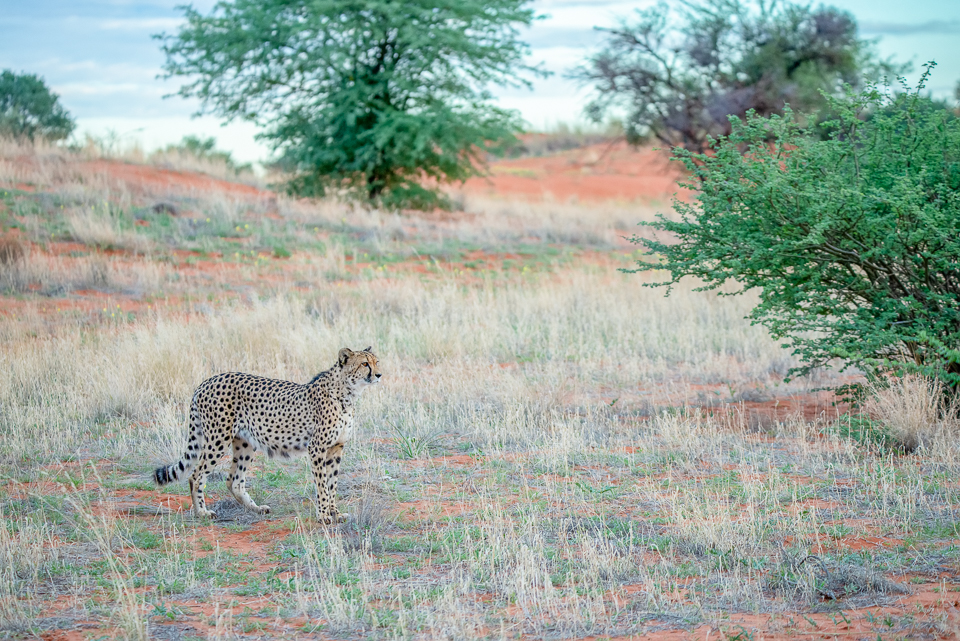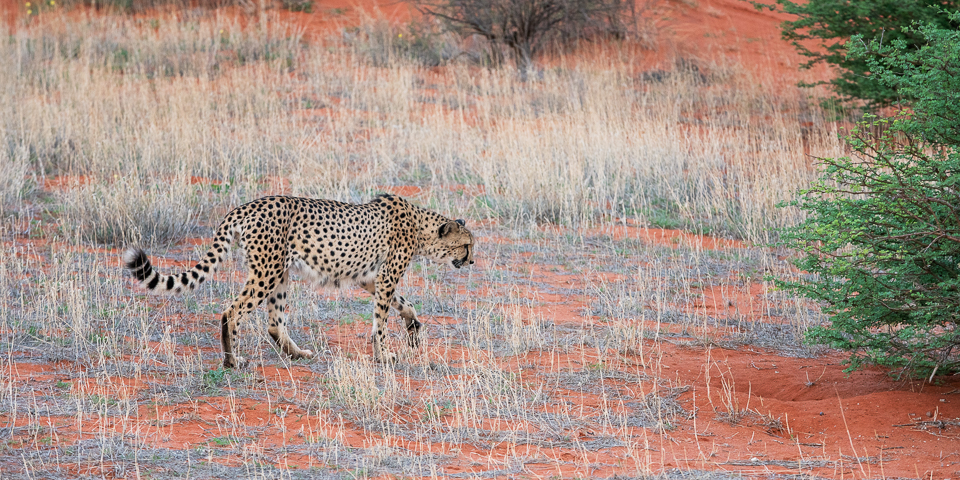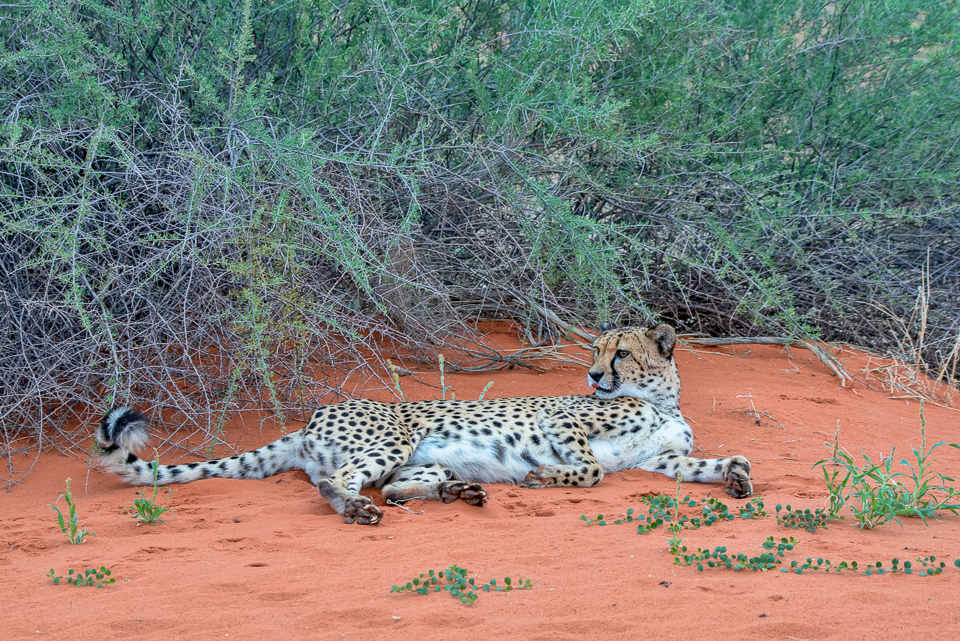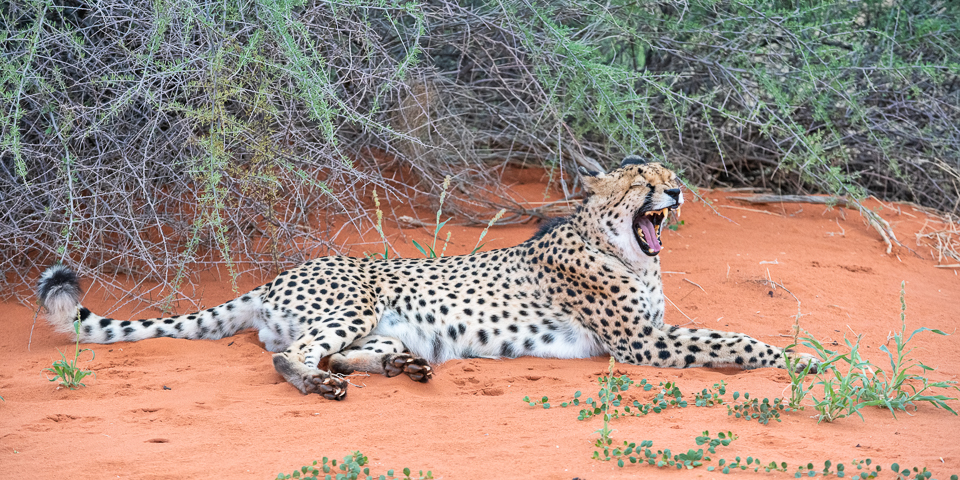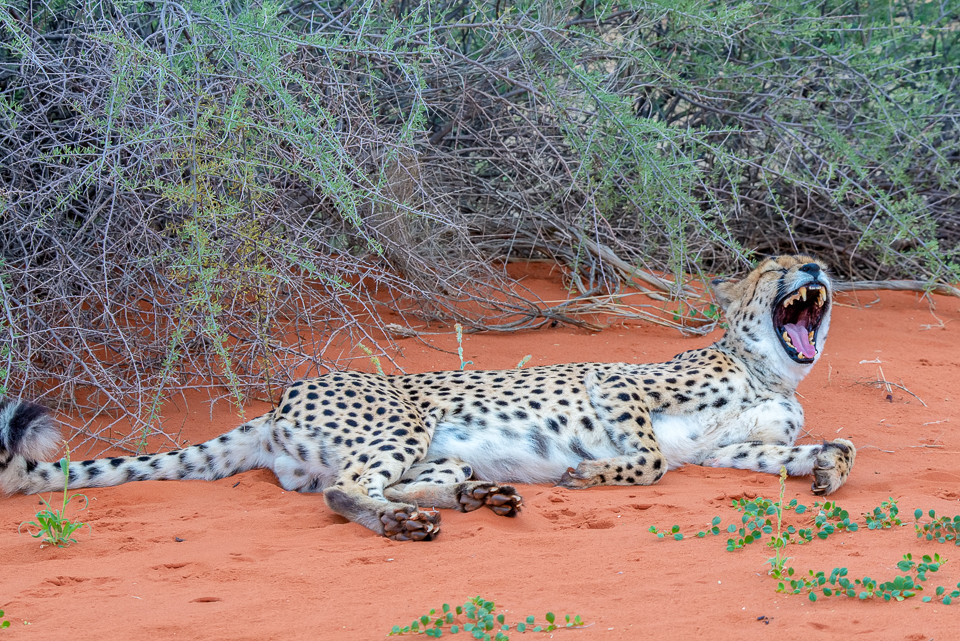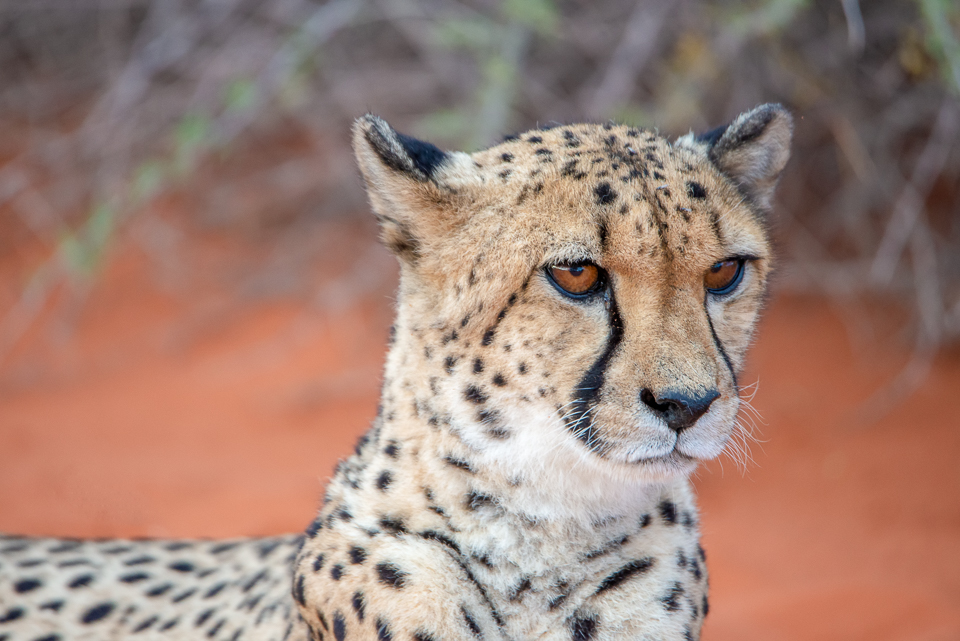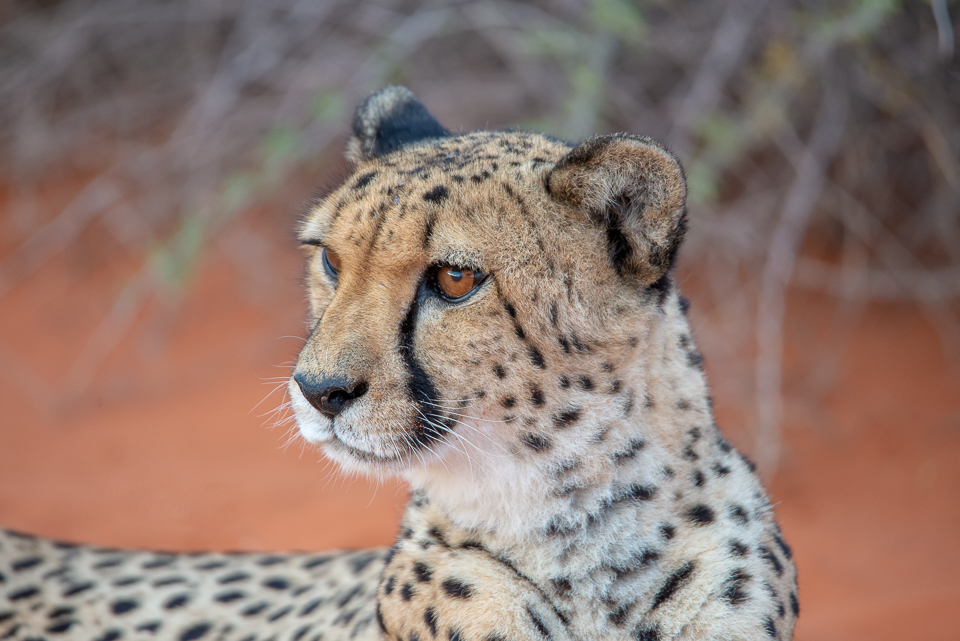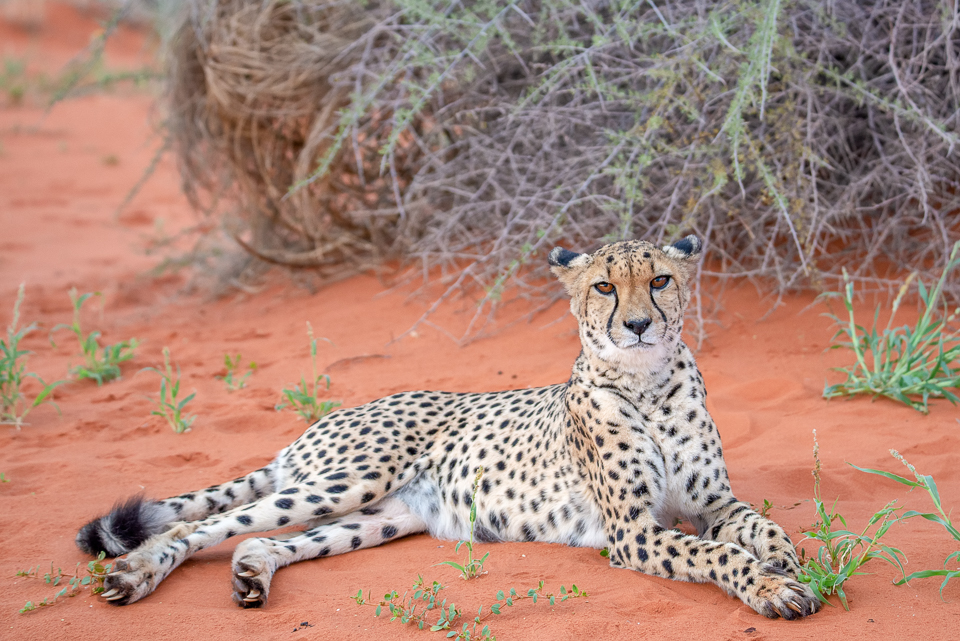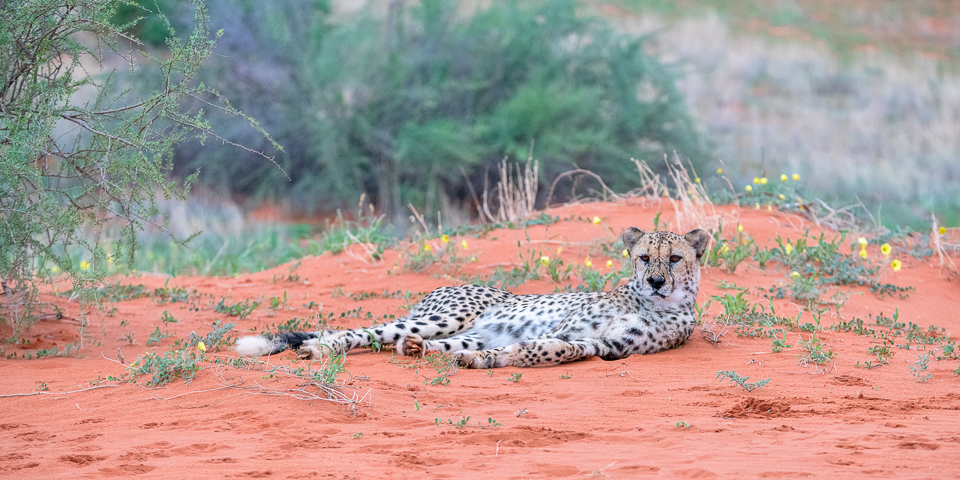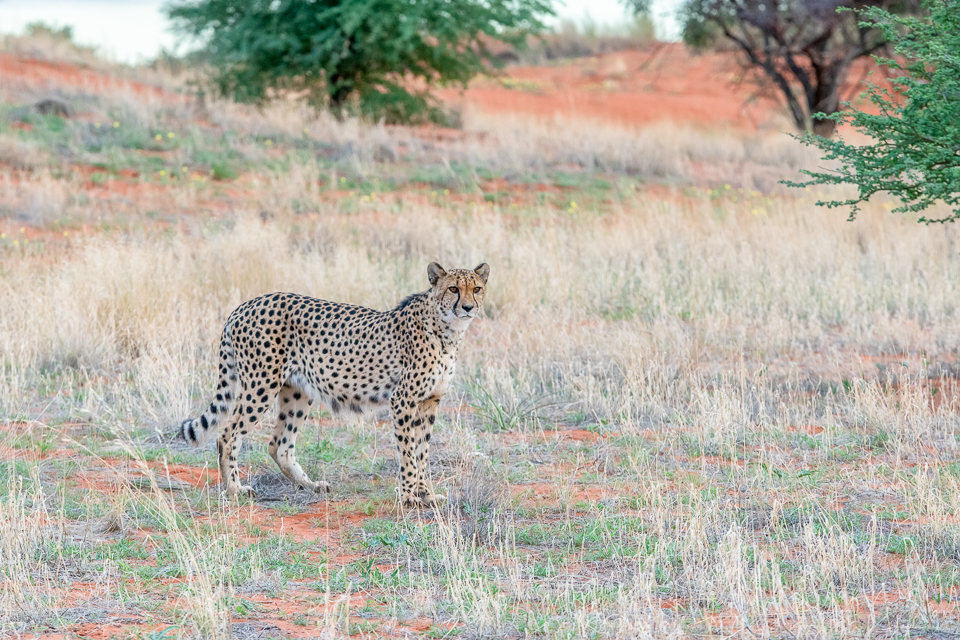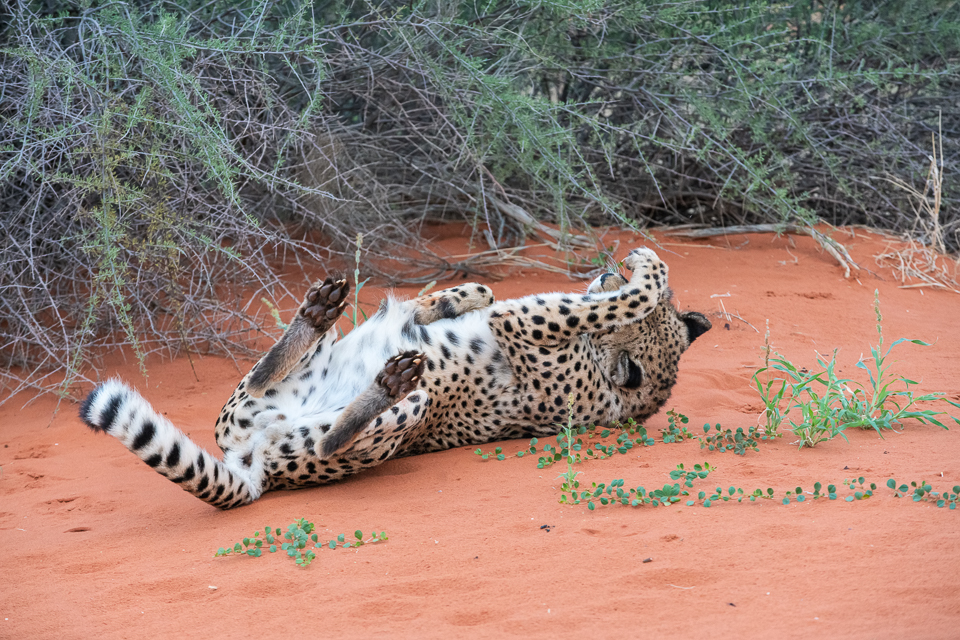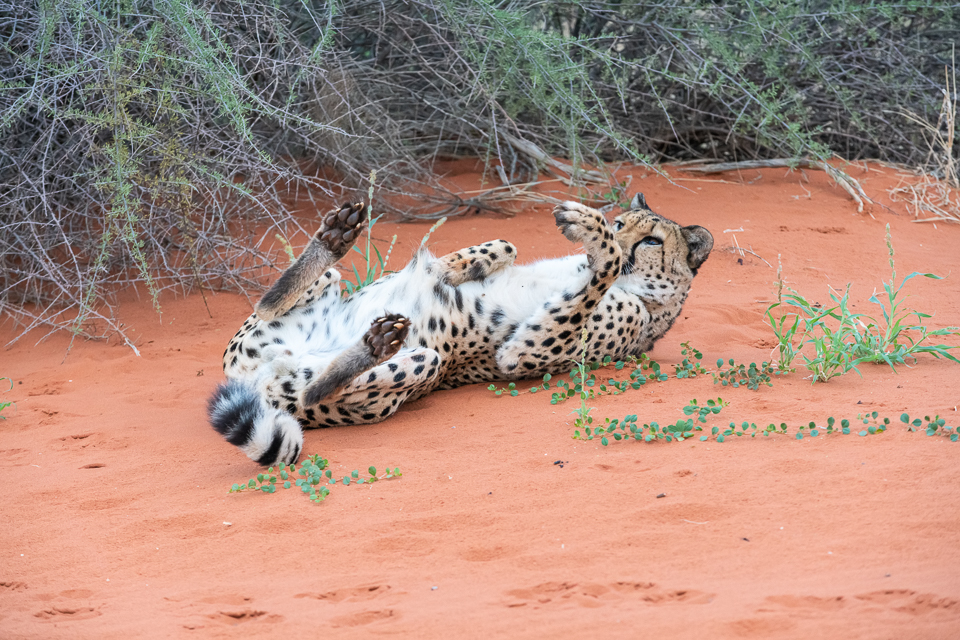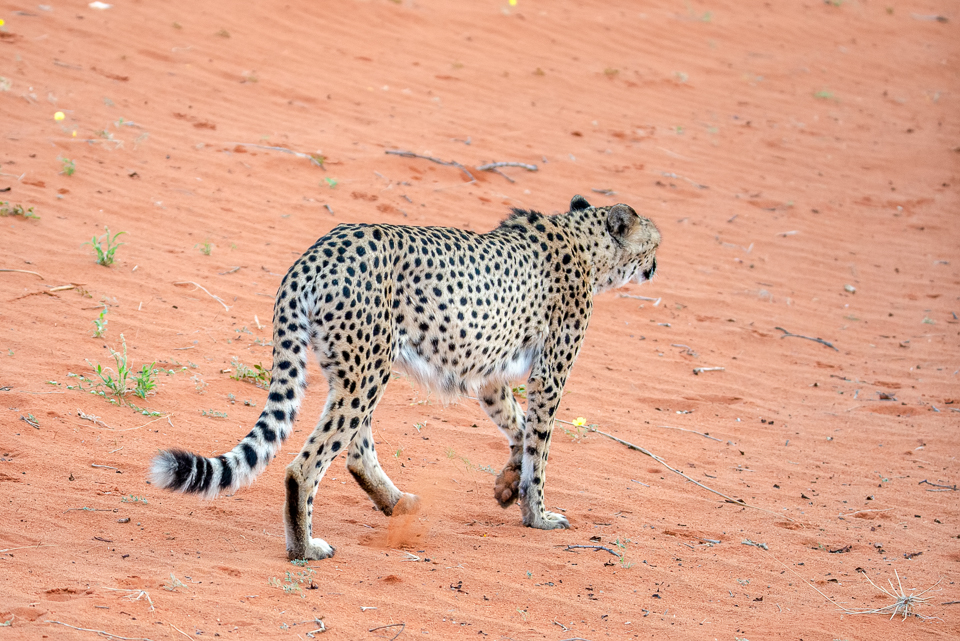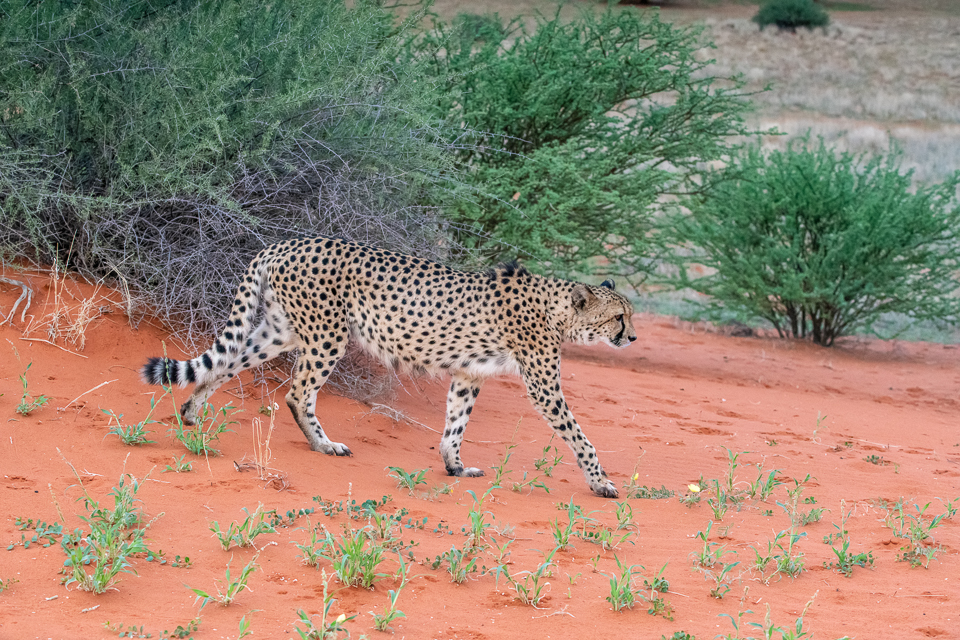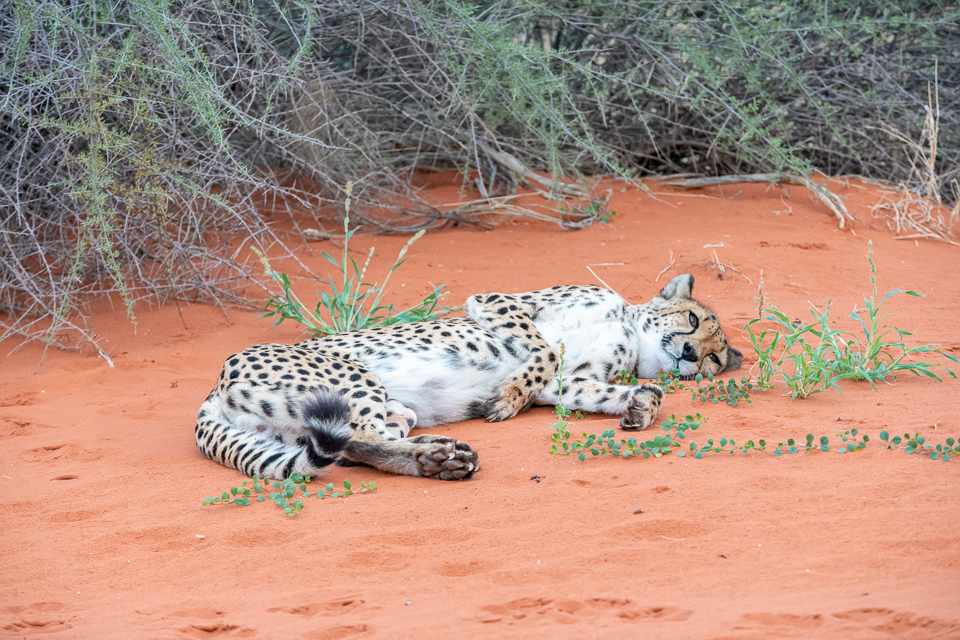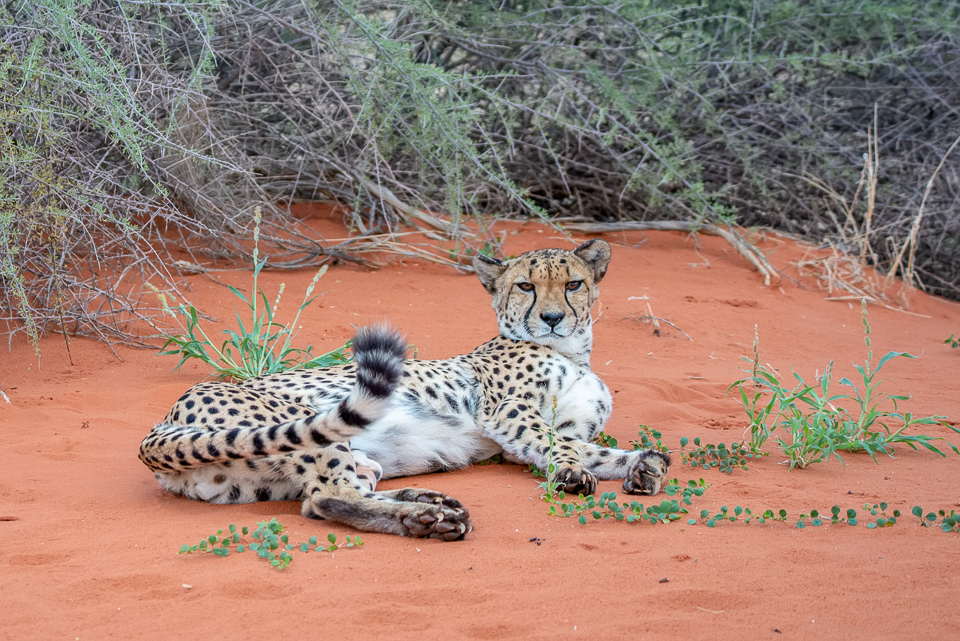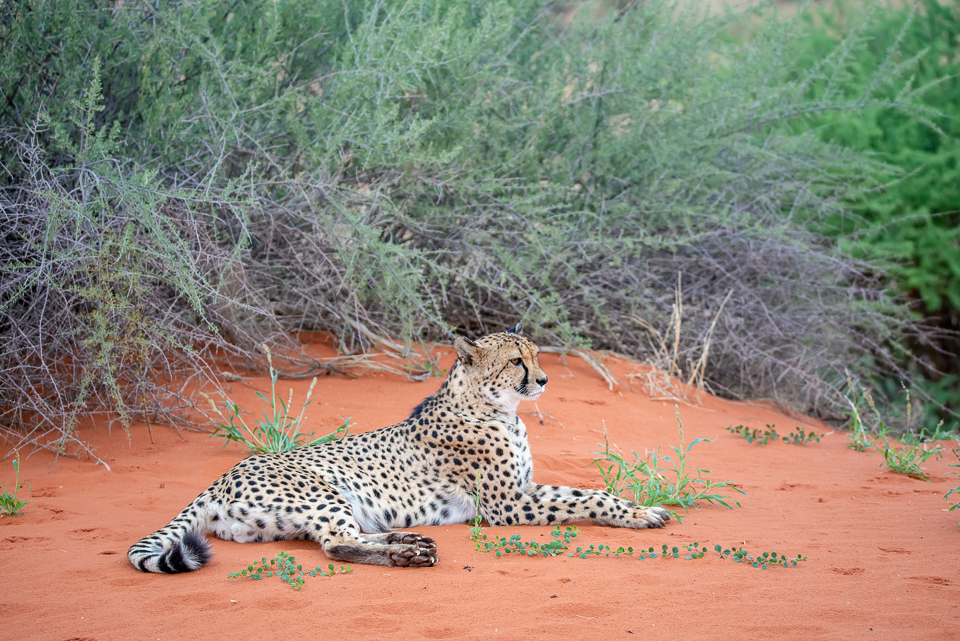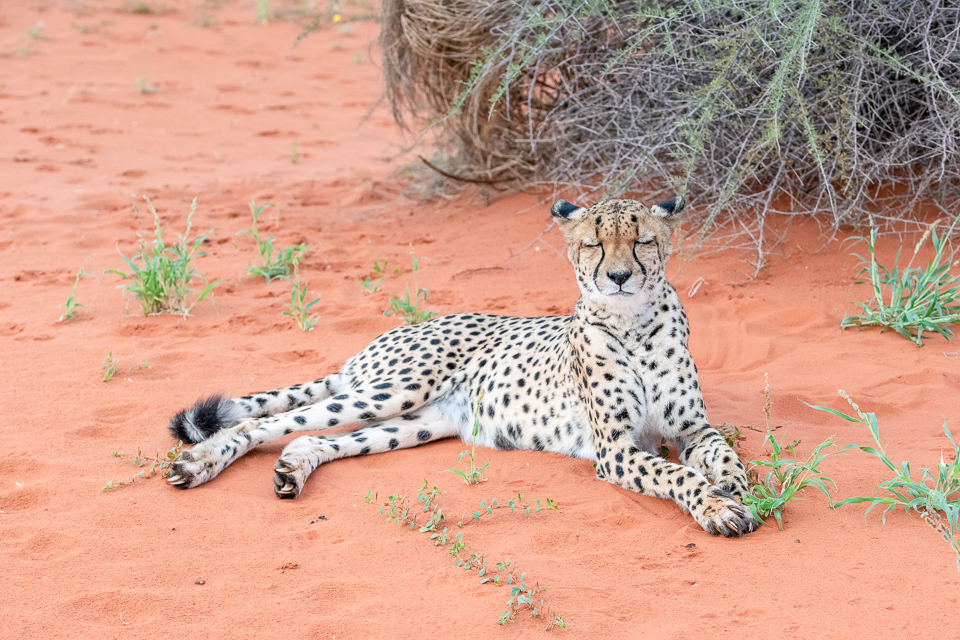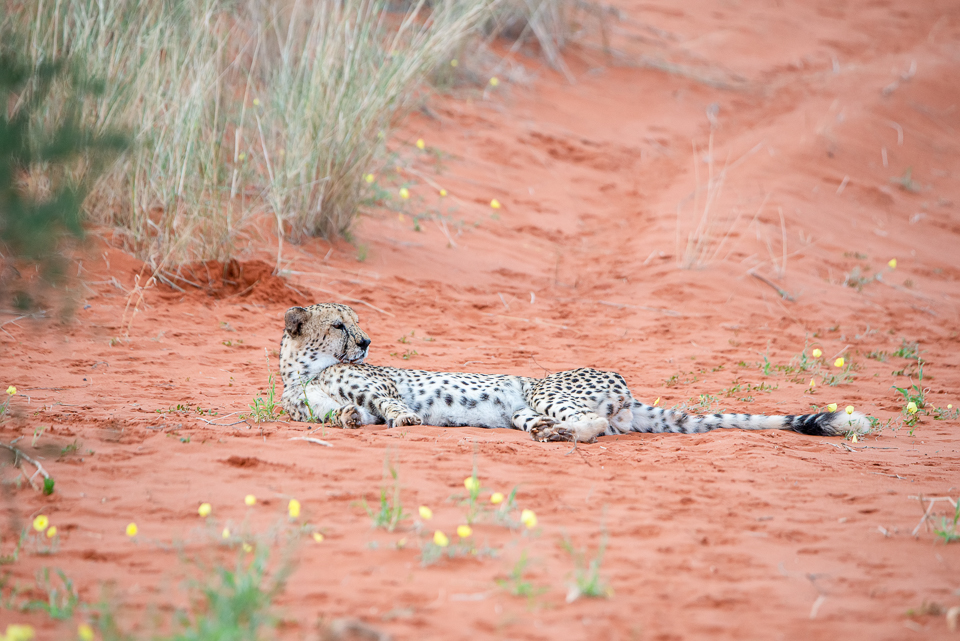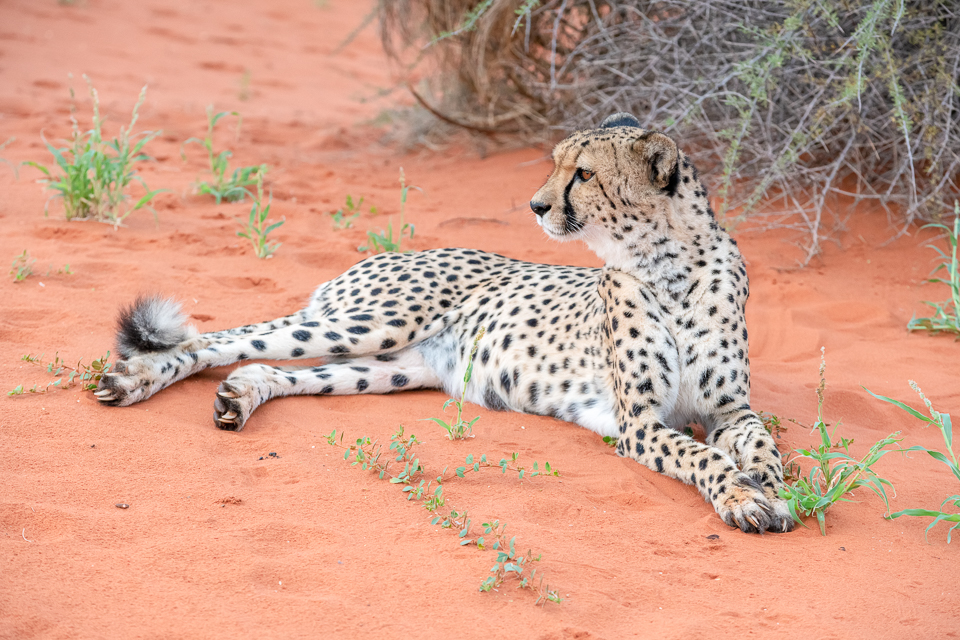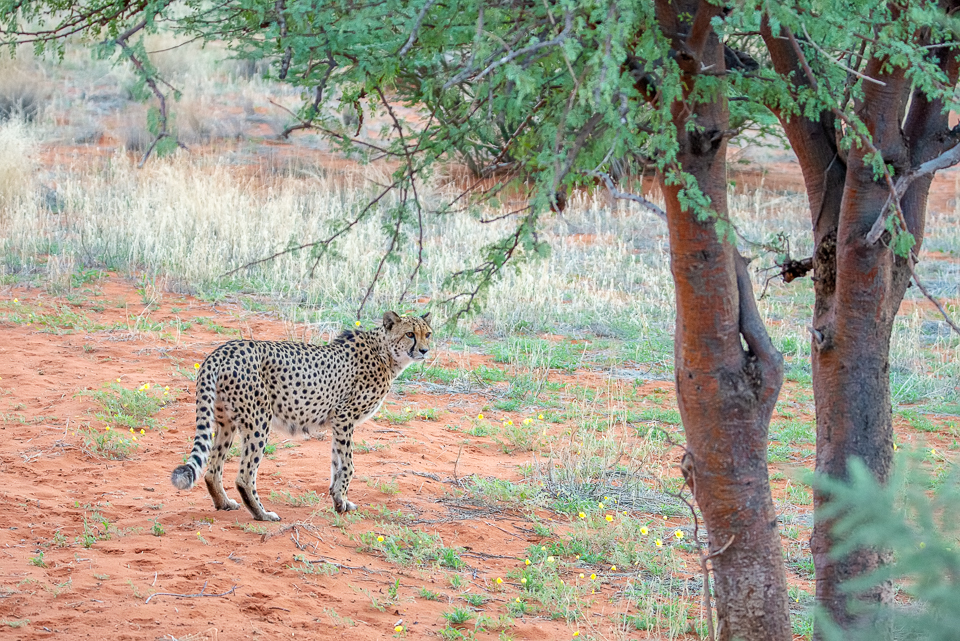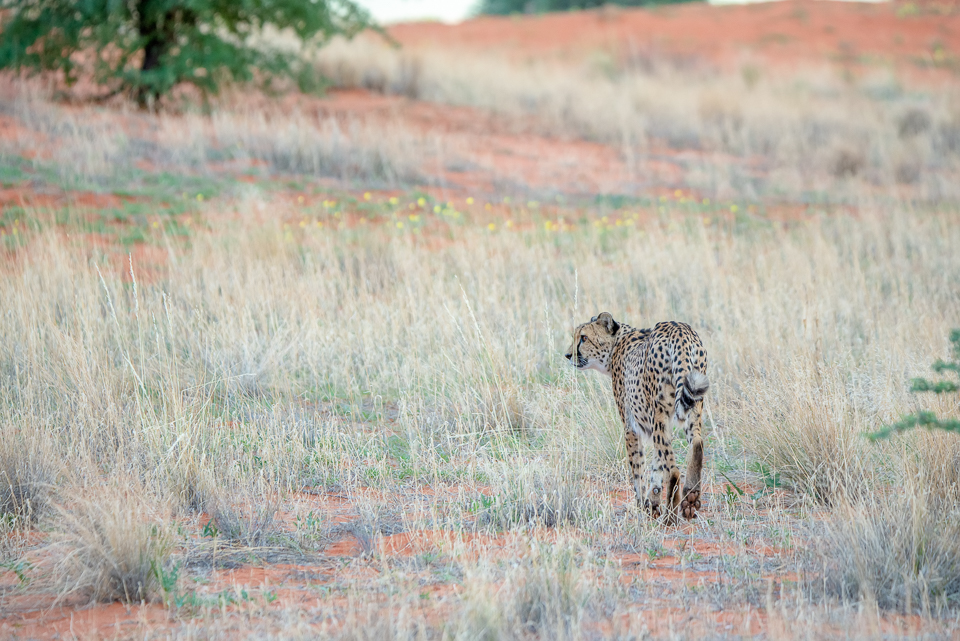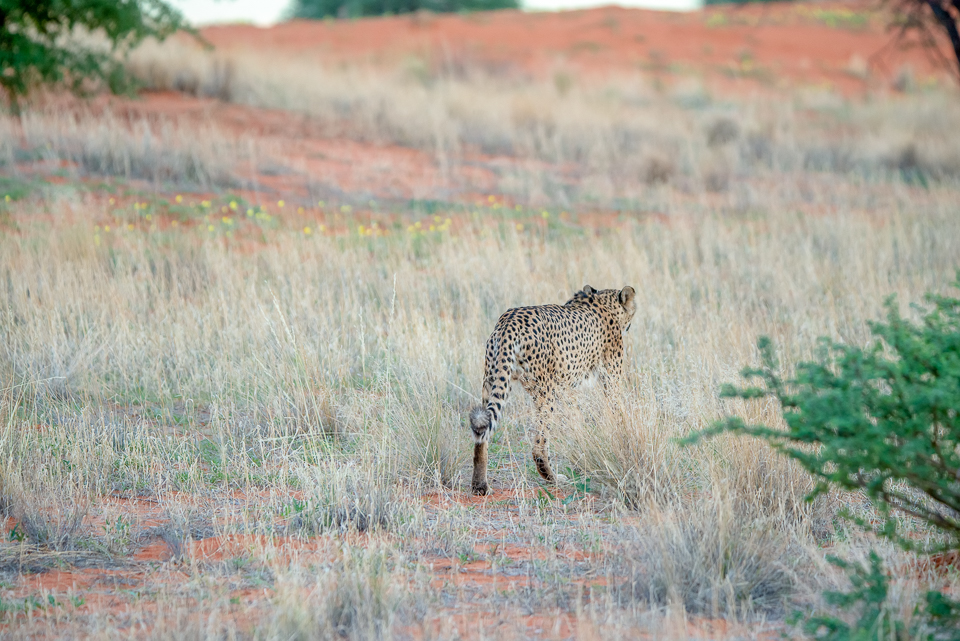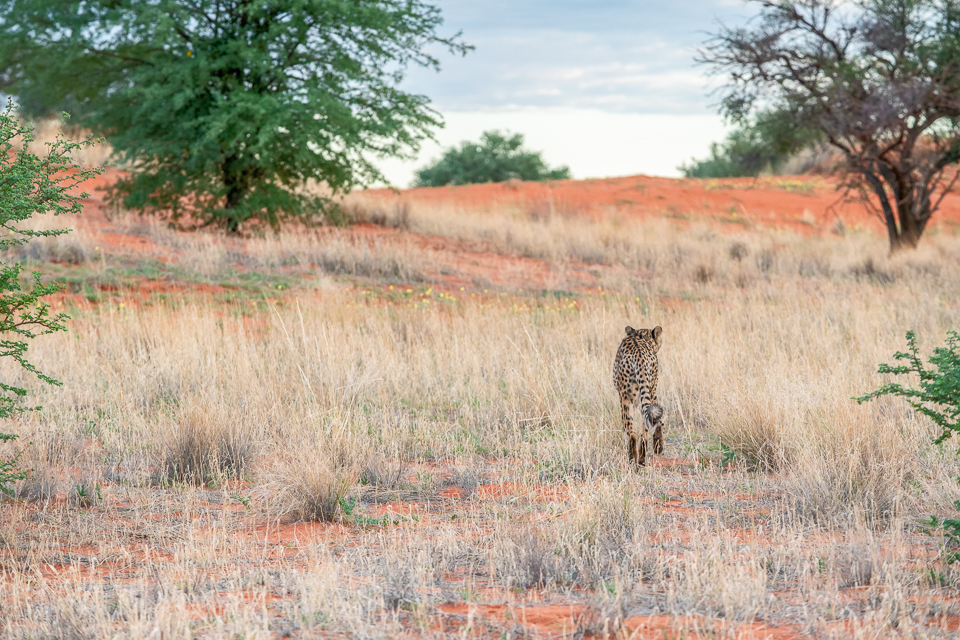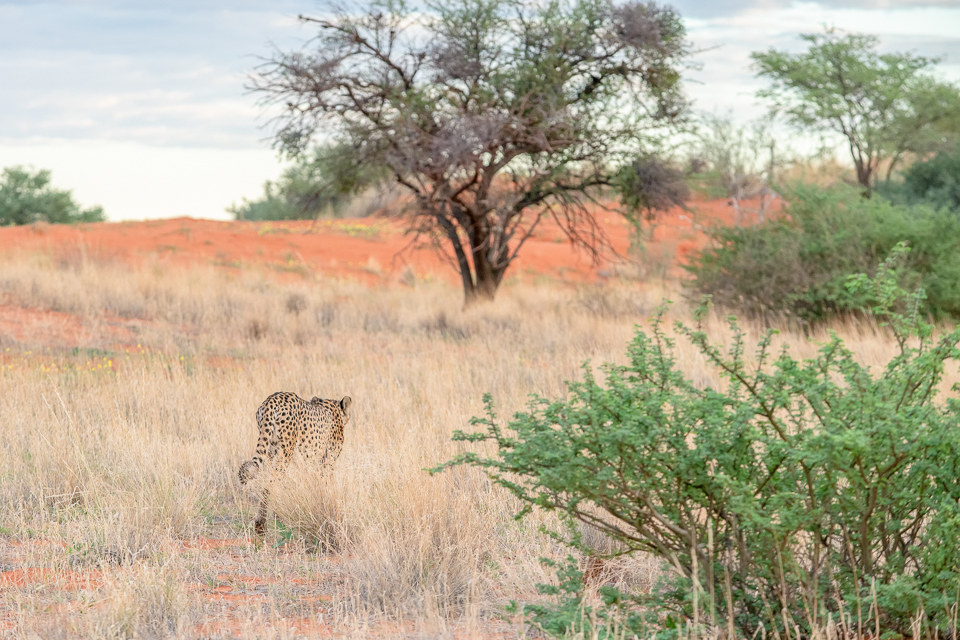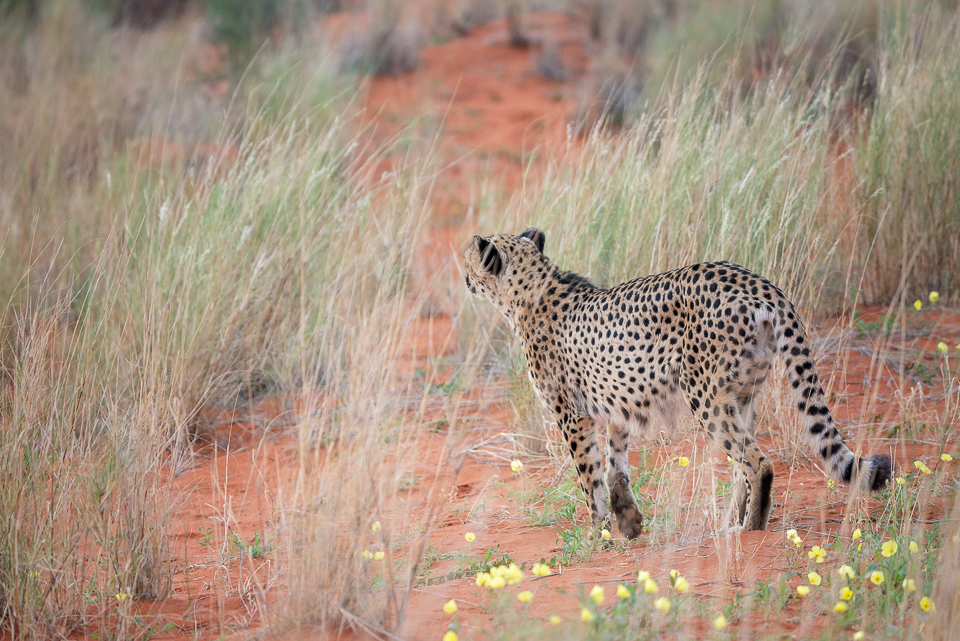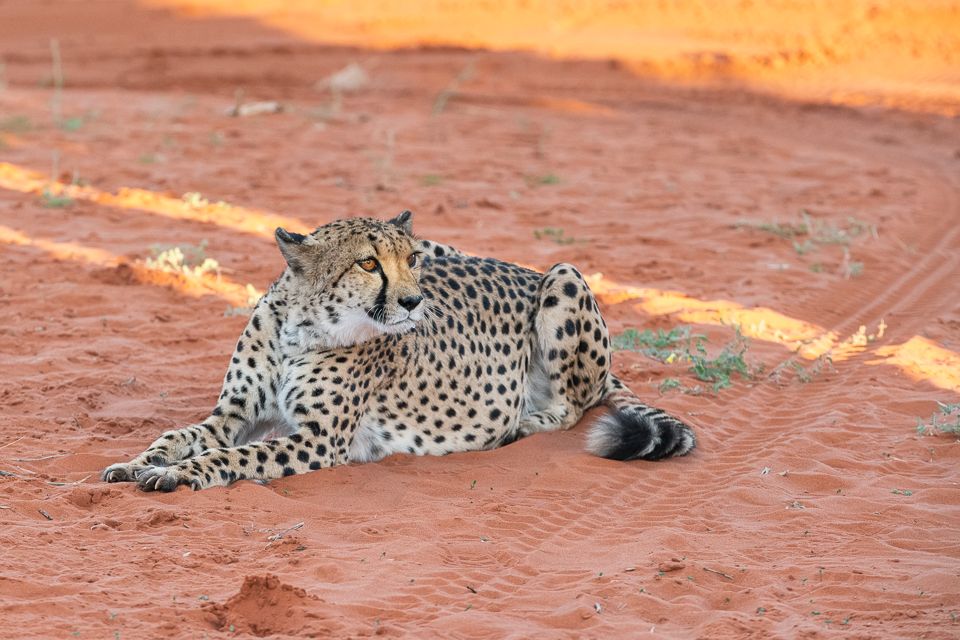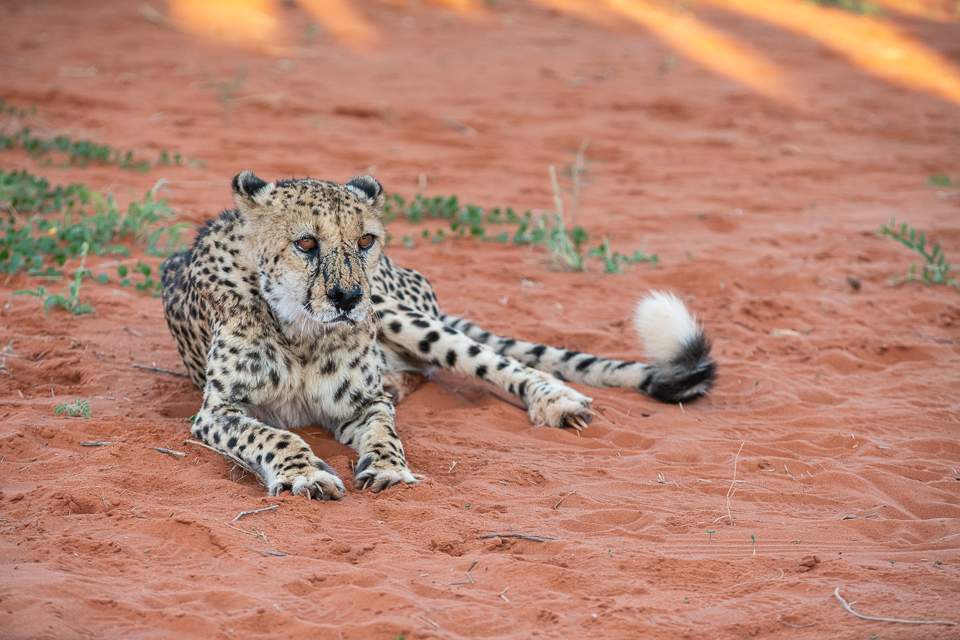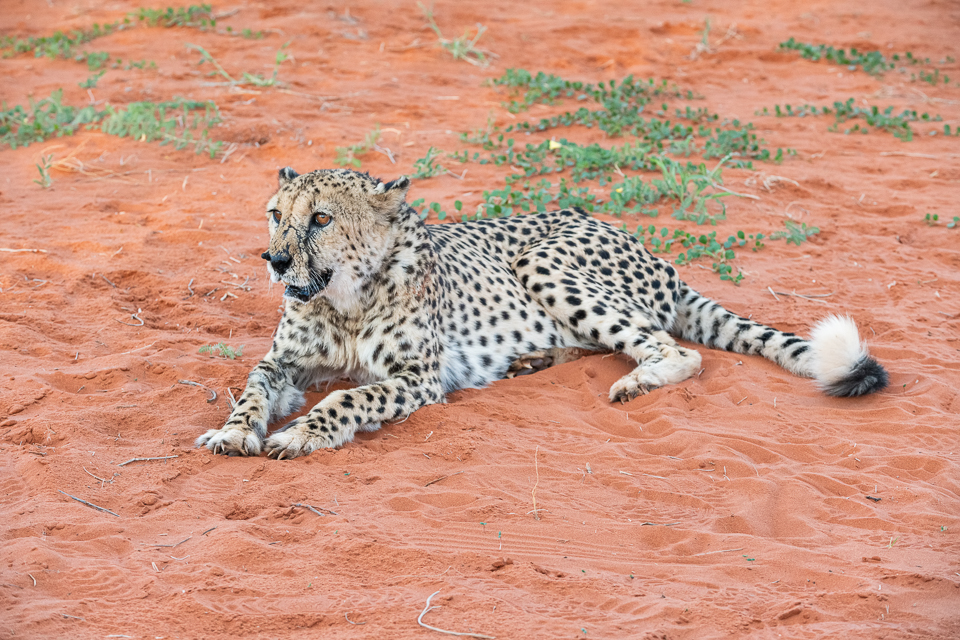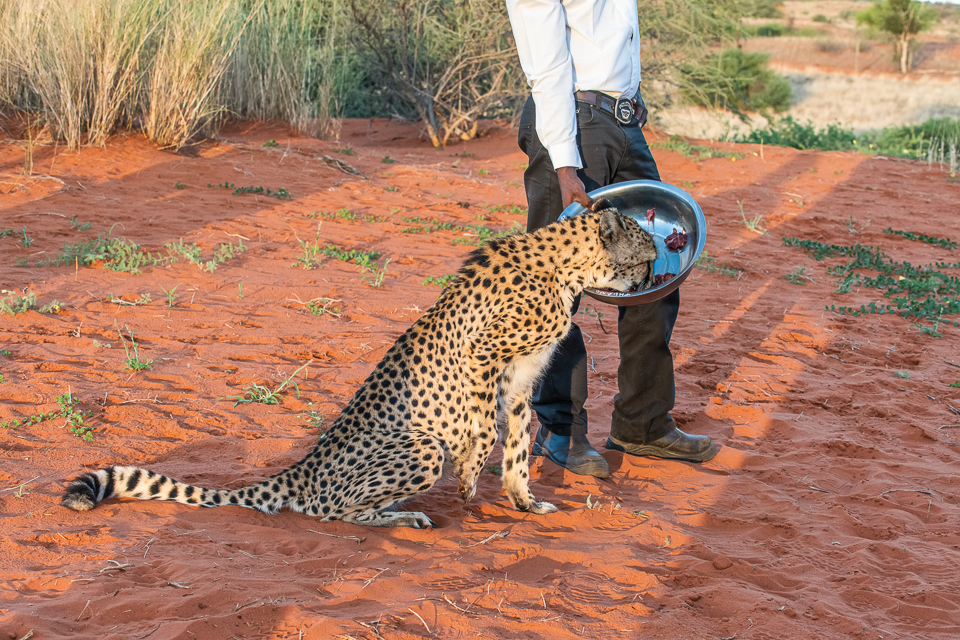The guide takes us to the enclosure of two cheetahs, Etosha and Tuano. Tuano has a lot of scars from the times there used to be three cheetahs together and they often fought for food. - And so the meaty bones and whole carcasses were removed from their diet and replaced by the chopped meat and organs - it is explained to us. - How do you suplement calcium in their diet? - I ask. - Oh, no worries, they do have some vitamin powders. - Do you mean vitamins and minerals? No answer. - Calcium citrate? Calcium carbonates? Eggshells? The guide stares at me with a very blank face and my heart starts to sink. - How do you balance phosphorus to calcium ratio then? - They do have this powder, you know, the vitamin powder... - Vitamins are irrelevant to my question, really - I say, and he can see by now I am deeply worried. - Wait, he says, I do not know, I do not make meals, the behaviourist will know, you must ask him, maybe they have this calcium in the powder. I do not know. Later on, the behaviourist will come to us to explain that, indeed, they do have calcium supplements in their diet, and follow recipe for well balanced meals. - They even do get meaty bones to clean the teeth, just not in every meal - he says. Heavy stone is lifted from my heart. We talk for a while about their diet.
Etosha and Tuon get their barf (for those who may not know, barf = biologically appropriate raw food) and guests can even come close and stroke their heads when they are engrossed in eating, but that's it. The moment they finish their meal no one (apart from the behaviourist maybe) will touch them any more, and they will disappear shortly running away in their huge enclosure. No full bowl, no sense to stay around humans...
Przewodnik zabiera nas do wybiegu dwóch gepardów: Etoshy i Tuano. Tuano ma dużo blizn, szczególnie wokół nosa, z czasów kiedy przebywał z nimi jeszcze jeden gepard i często walczyli miedzy sobą o jedzenie. - I dlatego z ich diety zostały wycofane mięsne kości czy całe tuszki, a zamiast tego dostają pokrojone kawałki mięsa i podrobów – wyjaśnia przewodnik. - A jak suplementujecie wapń w ich diecie? – pytam. - Ach, wszystko jest dobrze, one dostają czasem sproszkowane witaminy. -Rozumiem, że nie tylko witaminy, ale też inne suplementy? Brak odpowiedzi. - Cytrynian wapnia? Węglan wapnia? Skorupki jajek? Przewodnik patrzy na mnie, jakbym mówiła do niego po chińsku. (Albo po polsku). To niemożliwe - myślę, ale zaczynam wpadać w panikę. -To jak bilansujecie stosunek wapnia do fosforu? – One dostają ten proszek do jedzenia, tam są wszystkie potrzebne witaminy… -Witaminy nie są odpowiedzią na moje pytanie – mówię i przewodnik już widzi, że coś jest bardzo nie tak. - Behawiorysta na pewno wie, ja nie wiem, jego trzeba zapytać. Za jakiś czas prowadzi do nas behawiorystę, który wyjaśnia, ze tak, wapń jest suplementowany, wszystko jest wyliczane i bilansowane, a gepardy dla higieny zębów dostają nawet mięsne kości i tuszki, tyle ze raz na jakiś czas, nie codziennie. Wielki ciężar spada mi z serca. Gadamy sobie chwilę o diecie u kotowatych.
Etosha i Tuano dostają swój barf (dla tych, co nie wiedzą, barf to surowe posiłki z mięsa, podrobów i niezbędnych suplementów) i goście mogą podejść bliżej, a nawet głasnąć gepardzie głowy, gdy koty są całkowicie zaabsorbowanie pochłanianiem posiłku. Ale tylko wtedy. Kiedy ostatni kawałek mięsa znika w ich przełyku, dotknąć się być może pozwolą swojemu behawioryście. Zresztą za chwilę pognają w głąb swojego wybiegu i tyle ich widziano. Nie ma pełnej michy, nie ma sensu przebywać wokół ludzi.

